#Washington Merry Go Round
Text
Merry-Go-Round

This merry-go-round used to sit on the Washington Mall, across the street from the Hirshhorn Museum (and a few yards beyond the sculpture park) though where it once was is now an empty space.
And while I don't recall it ever working, even a still merry go round is better than the space that remains when its gone.
Supposedly it's being refurbished and I imagine that that will take awhile, after all merry go round repair must be a fairly niche field.
0 notes
Text

Merry-go-round
#merry go round#national mall#washington dc#district of columbia#Panorama#photo#digital#original photographers
0 notes
Text

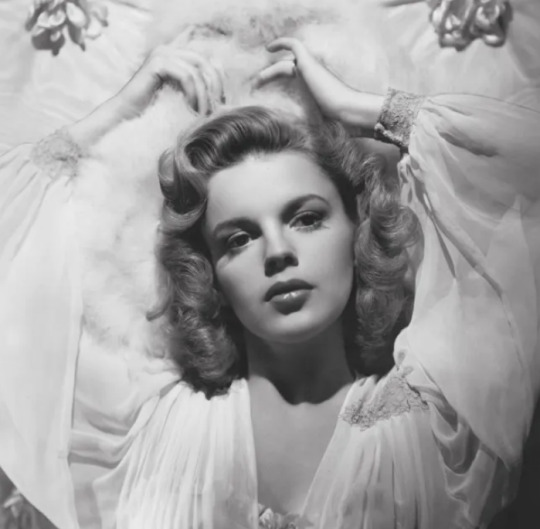
Propaganda
Machiko Kyō (Rashomon, Floating Weeds, Older Brother Younger Sister)— Considered an early sex symbol in Japanese cinema. Also just an ethereal beauty who can also go feral/unhinged in a glorious way.
Judy Garland (Meet Me In St. Louis, A Star is Born, Summer Stock)— Judy is the GOAT when it comes to classic movie musicals. The voice of an angel who deserved so much better than she got. She can sing she can dance she can act she's a triple threat. Though she had a turbulent personal life (her treatment as a child star by the studio system makes me mad as hell like Louis b Mayer fight me ((she was made to believe that she was physically unattractive by the constant criticism of film executives who made her feel ugly and who manipulated her onscreen appearance by capping her teeth and using discs in her nose to change its shape and Mayer called her "my little hunchback" like imagine hearing that as a child and not having damage)) she always goddamn delivered on screen and in any performance she gave. She began in vaudeville performing with her sisters and was signed to MGM at 13. Starting out in supporting parts especially paired with mickey Rooney in a bunch of films (she's the best part tbh) she eventually transferred to the lead role. She is best known for her starring role in movie musicals like the iconic Wizard of Oz (somewhere over the rainbow still hits hard and is ranked the top film song of all time), meet me in St. Louis (Judy singing have your self a merry little Christmas brings tears to the eyes she is that powerful), the Harvey girls (she looks like a technicolor dream and sings a catchy af song about trains), Easter parade ( dancing and singing with Fred Astaire), for me and my gal, the pirate, and summer stock ( with pal Gene Kelly who she helped when he was starting out and he helped her when she was struggling). But she also does non- singing just as well like the clock ( her first movie where she sings no songs and is an underrated ww2 era romance), her Oscar nominated a star is born ( like the man that got away she put her whole soul in that and I have beef with the fact she lost to grace kelly ((whom I love but like still not even her best work)), and judgement at Nuremberg (a courtroom drama about the nazi war criminal trials). Outside of film she made concert appearances to record-breaking audiences, released 8 studio albums, and had her own Emmy-nominated tv series. She was the youngest (39) and first female recipient of the Cecil B DeMille award for lifetime achievement in the film industry. Girl was a lifelong democrat and was a financial and moral supporter of many causes including the civil rights movement (she was at the March on Washington and held a press conference to protest the 16th street Baptist church bombings). She was a friend of the Kennedy family and would call jfk weekly often ending the calls by singing the first few lines of somewhere over the rainbow (she thought of them as Gemini twins).She was a member of the committee for the first amendment which was formed in response to the HUAC investigations. Though she died far too young and tragically she remains an icon for her work and her life. As a girl who didn't feel like i was as pretty as everyone else I have always felt a connection to Judy and I just really love her.
This is round 3 of the tournament. All other polls in this bracket can be found here. Please reblog with further support of your beloved hot sexy vintage woman.
[additional propaganda submitted under the cut.]
Machiko Kyō:
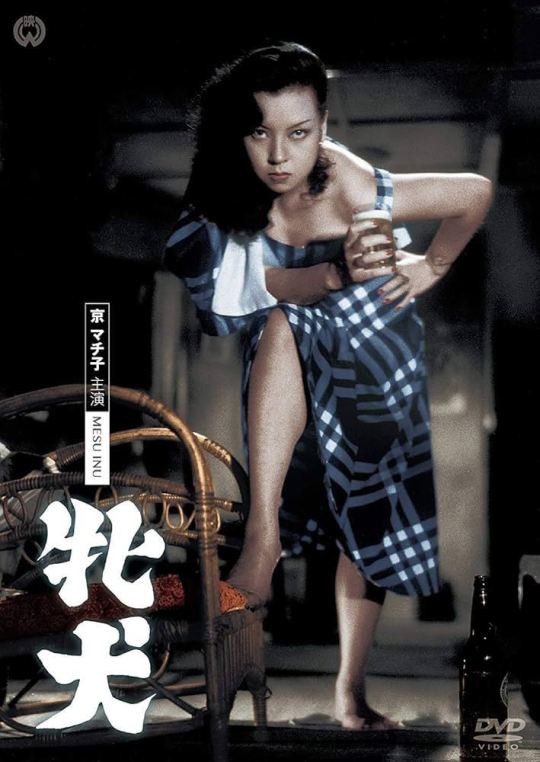

Judy:

Judy's voice alone qualifies her for at least top ten hottest HOT VINTAGE MOVIE WOMEN. She was a truly incredible swing singer, with a stunning voice on top of her technique. Her short dark hair looked incredible in just about any style. Have I mentioned her swagger? I can’t do it justice with words. She had swagger. She was funny as hell, and clever too. Incredibly charming and cool. I adore her.
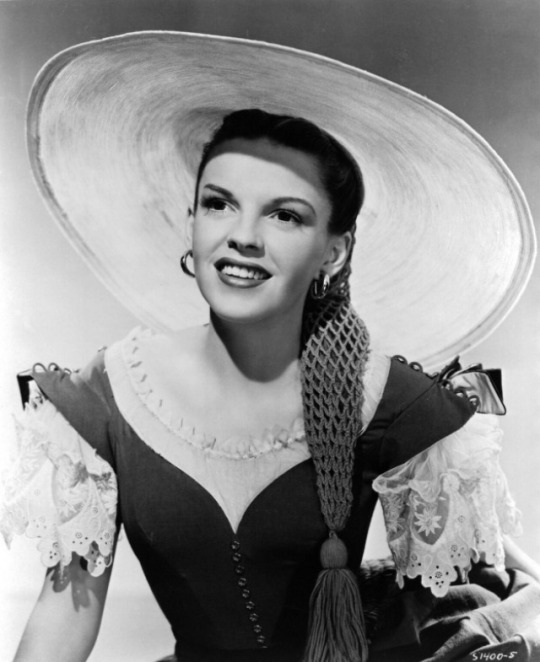
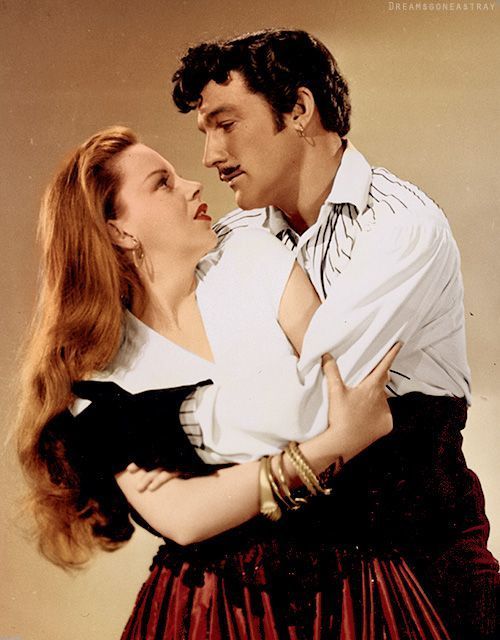


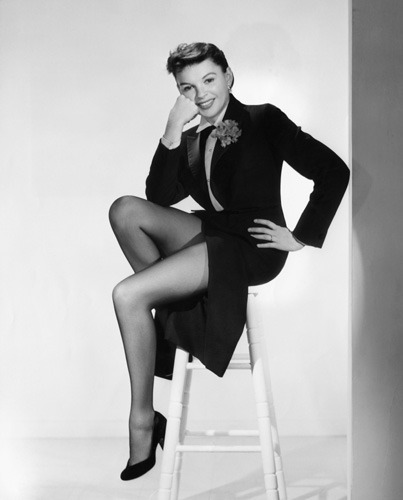

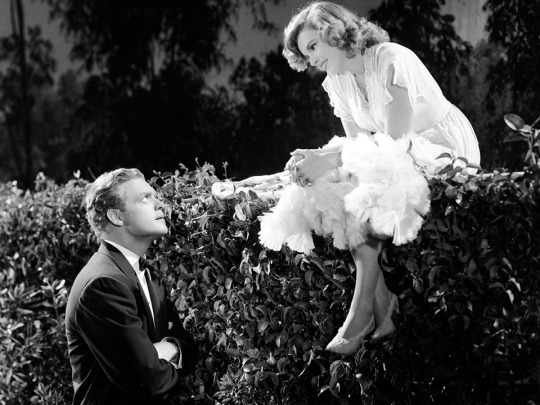
Her eyes, her voice have bewitched me
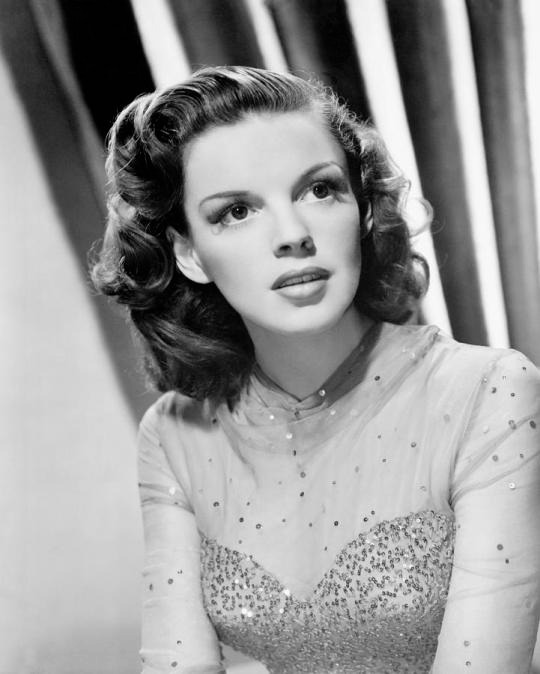
I mean how can you beat the one and only Judy? She's beautiful, her smile is contagious, the way she sings with her whole body. You can't help but love her.
youtube
Beautiful woman, love her singing voice. And she can do everything between happy or silly and angry or heartbroken
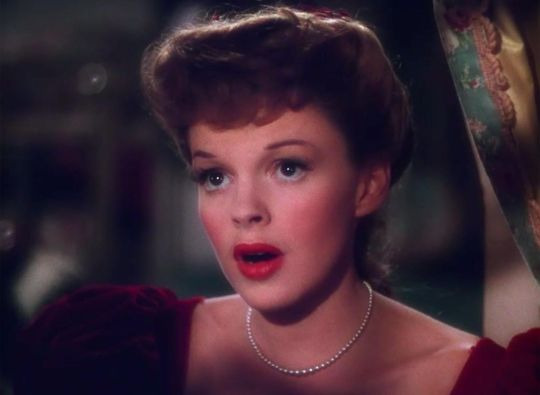
482 notes
·
View notes
Text
Okay, folks, the mini-tourney is inching closer to the finals, so I'm going to give a list of the competitors in the Miss Billboard Tourney in order to give everyone a chance to submit more propaganda. The nominees are:
Lale Andersen
Marian Anderson
Signe Toly Anderson
Julie Andrews
LaVerne Andrews
Maxene Andrews
Patty Andrews
Ann-Margret
Joan Armatrading
Dorothy Ashby
Joan Baez
Pearl Bailey
Belle Baker
Josephine Baker
LaVern Baker
Florence Ballard
Brigitte Bardot
Eileen Barton
Fontella Bass
Shirley Bassey
Maggie Bell
Lola Beltran
Ivy Benson
Gladys Bentley
Jane Birkin
Cilla Black
Ronee Blakley
Teresa Brewer
Anne Briggs
Ruth Brown
Joyce Bryant
Vashti Bunyan
Kate Bush
Montserrat Caballe
Maria Callas
Blanche Calloway
Wendy Carlos
Cathy Carr
Raffaella Carra
Diahann Carroll
Karen Carpenter
June Carter Cash
Charo
Cher
Meg Christian
Gigliola Cinquetti
Petula Clark
Merry Clayton
Patsy Cline
Rosemary Clooney
Natalie Cole
Judy Collins
Alice Coltrane
Betty Comden
Barbara Cook
Rita Coolidge
Gal Costa
Ida Cox
Karen Dalton
Marie-Louise Damien
Betty Davis
Jinx Dawson
Doris Day
Blossom Dearie
Kiki Dee
Lucienne Delyle
Sandy Denny
Jackie DeShannon
Gwen Dickey
Marlene Dietrich
Marie-France Dufour
Julie Driscoll
Yvonne Elliman
Cass Elliot
Maureen Evans
Agnetha Faeltskog
Marianne Faithfull
Mimi Farina
Max Feldman
Gracie Fields
Ella Fitzgerald
Roberta Flack
Lita Ford
Connie Francis
Aretha Franklin
France Gall
Judy Garland
Crystal Gayle
Gloria Gaynor
Bobbie Gentry
Astrud Gilberto
Donna Jean Godchaux
Lesley Gore
Eydie Gorme
Margo Guryan
Sheila Guyse
Nina Hagen
Francoise Hardy
Emmylou Harris
Debbie Harry
Annie Haslam
Billie Holiday
Mary Hopkin
Lena Horne
Helen Humes
Betty Hutton
Janis Ian
Mahalia Jackson
Wanda Jackson
Etta James
Joan Jett
Bessie Jones
Etta Jones
Gloria Jones
Grace Jones
Shirley Jones
Tamiko Jones
Janis Joplin
Barbara Keith
Carole King
Eartha Kitt
Chaka Khan
Hildegard Knef
Gladys Knight
Sonja Kristina
Patti Labelle
Cleo Laine
Nicolette Larson
Daliah Lavi
Vicky Leandros
Peggy Lee
Rita Lee
Alis Lesley
Barbara Lewis
Abbey Lincoln
Melba Liston
Julie London
Darlene Love
Lulu
Anni-Frid Lyngstad
Barbara Lynn
Loretta Lynn
Vera Lynn
Siw Malmkvist
Lata Mangeshkar
Linda McCartney
Kate McGarrigle
Christie McVie
Bette Midler
Jean Millington
June Millington
Liza Minnelli
Carmen Miranda
Joni Mitchell
Liz Mitchell
Marion Montgomery
Lee Morse
Nana Mouskouri
Anne Murray
Wenche Myhre
Holly Near
Olivia Newton-John
Stevie Nicks
Nico
Laura Nyro
Virginia O’Brien
Odetta
Yoko Ono
Shirley Owens
Patti Page
Dolly Parton
Freda Payne
Michelle Phillips
Edith Piaf
Ruth Pointer
Leontyne Price
Suzi Quatro
Gertrude Rainey
Bonnie Raitt
Carline Ray
Helen Reddy
Della Reese
Martha Reeves
June Richmond
Jeannie C. Riley
Minnie Riperton
Jean Ritchie
Chita Rivera
Clara Rockmore
Linda Ronstadt
Marianne Rosenberg
Diana Ross
Anna Russell
Melanie Safka
Buffy Sainte-Marie
Samantha Sang
Pattie Santos
Hazel Scott
Doreen Shaffer
Jackie Shane
Marlena Shaw
Sandie Shaw
Dinah Shore
Judee Sill
Carly Simon
Nina Simone
Nancy Sinatra
Siouxsie Sioux
Grace Slick
Bessie Smith
Mamie Smith
Patti Smith
Ethel Smyth
Mercedes Sosa
Ronnie Spector
Dusty Springfield
Mavis Staples
Candi Staton
Barbra Streisand
Poly Styrene
Maxine Sullivan
Donna Summer
Pat Suzuki
Norma Tanega
Tammi Terrell
Sister Rosetta Tharpe
Big Mama Thornton
Mary Travers
Moe Tucker
Tina Turner
Twiggy
Bonnie Tyler
Sylvia Tyson
Sarah Vaughan
Sylvie Vartan
Mariska Veres
Akiko Wada
Claire Waldoff
Jennifer Warnes
Dee Dee Warwick
Dionne Warwick
Dinah Washington
Ethel Waters
Elisabeth Welch
Kitty Wells
Mary Wells
Juliane Werding
Tina Weymouth
Cris Williamson
Ann Wilson
Mary Wilson
Nancy Wilson
Anna Mae Winburn
Syreeta Wright
Tammy Wynette
Nan Wynn
Those in italics have five or more pieces of usable visual, written, or audio propaganda already. If you have any visuals like photos or videos, or if you have something to say in words, submit it to this blog before round one begins on June 25th!
If you don't see a name you submitted here, it's because most or all of their career was as a child/they were too young for the cutoff, their career was almost entirely after 1979, or music was something they only dabbled in and are hardly known for. There are quite a few ladies on the list whose primary career wasn't "recording artist" or "live musician," but released several albums or were in musical theater, so they've been accepted.
#long post#miss billboard tourney#i wasn't originally going to list them all but i decided to do so because there are so many without propaganda
41 notes
·
View notes
Text

WTH house. Somewhere, under all the decor and reno, is a 1952 mid-century modern home in Bremerton, Washington. 5bds, 3ba, $855K.

The entrance is long and narrow, with a coat closet, but it's not attractive. It leads to a larger foyer with double doors on one side, and a brick wall with a pony wall and Sputnik light leading to the lower level.

Farther down, the narrow foyer is used as a small sunny area for plants.


This is a somewhat odd layout for a MCM. The double doors open to a living room off to the side with a fireplace tucked into a corner and a door to the patio.


Then, there's an open concept sitting area, a pink frou-frou dinette, and a large kitchen. There's too much going on, here.



There's so much going on, it's confusing. The original kitchen is gone and has been totally renovated. I don't know if the Victorian stove conveys, but it looks out of place and you can't really appreciate it.

Gone is any hint of MCM.

The pantry has a fancy glass door and some new IKEA shelving.


There's an updated bath to match the kitchen. I doubt if I would've chosen these 2 tiles in combination.



The primary bedroom and en-suite are nothing to brag about. What is that mess of astro-turf and flowers on the counter? It looks like some fool sloppily painted the grout on the tile backsplash, pink.


These 2 secondary bedrooms are nothing special. I imagine that they will take that giant chalkboard with them and I hope they still have the doors to the closet somewhere.

The 3rd bath is a renovated shower room.

The family room has been turned into an extra bedroom.

It has a kitchenette and a fun coin operated merry-go-round, that probably doesn't convey.

Finally, the 5th bedroom has sliders to the patio.

Outside there's a small patio and a garden on the side of the home. We know that Washington state is expensive, but this home does need a lot of work.

The irregular lot extends back a bit and measures .69 acre.
63 notes
·
View notes
Text
All the damn vampires (3)
Leon Kennedy x F!Reader
A series based on the 1987 film 'The Lost Boys'
CW: MDNI (18+ series), no smut this chapter!
Word count: 2.1k
I'm sorry for how long this took!!

After that night on the road with Leon, you had returned home having been able to catch Claire before she left hers and told her you weren’t feeling the best but would make it up to the two of them. Which is what brought you back to the boardwalk.
You’d paid for their food, and now the three of you were walking to the seaside rides while you ate ice cream. The girls had been grilling you on the life you had before moving, and on why you had moved. Claire had shrugged her shoulders arms spread as she declared how excited she was to get out of ‘this dumb fucking town and its dumb fucking missing posters’...clearly excited to go away to her Washington college.
Rebecca shook her head as she listened, a smile on her face “I dunno, I like it here. Having the sea so close is a nice perk.” Claire made a disgusted noise, pretending to gag at Rebecca’s words and drawing a laugh out of you. You had also told your new friends about the blonde constantly occupying your thoughts, and they had given you warnings about him.
“You should be careful, David’s gang are..trouble”.
“There’s just somethin’ wrong about them”.
“Honestly! My brother says there’s always complaints about them at the station!”
“Just don’t do anything dumb okay? We don't want you banned from the boardwalk too”.
All those warnings seemed to just go in one ear and out the other as they spoke to them, you nodded along and responded when they said them but you’d already made your mind up about the blonde biker.
It wasn’t until later in the night that your opinion on him would shift more in line to that of your friends.
The three of you had spent the rest of the evening and some of the night on the boardwalk, you’d even managed to win a teddy from a game. Most of the games were aimed at you losing your money, not that it mattered while you were having fun with your new friends. As you were walking back towards the merry-go-round, your attention was on the silly photos the three of you had taken. Claire had large glasses on, and Rebecca had a tiny hat, the three of you posing in stupid ways.
As you weren’t paying attention, you didn’t notice the familiar leather jacket making its way into your vision until an arm swung around your shoulder and pulled you into a cold side. A voice rumbling into your ear “Well hello there sweetheart” the pace of your heart sped up at the sound.
A grin took over your mouth as you looked over at him, and something you couldn’t place flashed in his eyes as his hand slid lower to your waist instead. “Hey! How have you been?” you’re not really sure how to speak to him. Not after what happened when you last saw him. His blonde brow arches up, his head tilting and causing his hair to shift so that he blows it away.
“Really pretty girl?” He shakes his head, pitching his voice up as he mocks you, “How have you been?” your face goes red with embarrassment as you try to shake him off but his grip tightens and he pulls you closer to his side. “No no, I’m sorry doll, I’m sorry! C’mon don’t ruin the fun”
His breath fans over your neck as he leans in close, his teeth scraping against the skin. And you swear they feel sharper than normal teeth but as you turn to look at him, his teeth are well, normal. You run a hand over your face, maybe all those rumours are starting to get to you.
Instead you roll your eyes at Leon, and smirks before pressing his lips to your ear. It’s like he can’t keep his hands to himself, or any other part of his body as his tongue dips to lick along the shell of your ear. “Let’s go and have some fun” comes that honey-soaked voice in your ear, and he’s easily able to pull you away from where you were going. Claire and Rebecca slip from your mind completely.
The blonde pulls you over to where his friends are, and the four of them seem to be terrorising the poor boardwalk guard as he tries to get them off the carousel. But once they see Leon, they walk away from their prey immediately, cheering and teasing the young man as they approach the both of you. And nerves fill your entire body, thrumming with electricity as the boys surround you as you wonder what they have planned.
You know you probably shouldn’t feel like this, especially when your friends had literally just warned you about the band of no-good doers but there seemed to be some kind of pull as the now six of you started walking towards where the band was playing on the seafront. Leon took your wrist, his cold fingers against your warm skin as he pulled you into the crowd and you saw one of the boys, Marko, wriggle his eyebrows at you causing you to blush before they were gone from sight.
Leon kept you close to him, grinning at you with that pretty smile as you danced together. The world falling apart around you until it was just the two of you, everybody else disappearing as your hands wandered against each other’s sides and your own trailed down his chest. It felt like you were in a trance as you swayed with almost no space between you, the scent of lemon and rust filling your nose before it was gone just as you’d registered it. You stumble as someone bumps into you, causing you to press against Leon’s sturdy chest, his hands settling on your waist and you watch as he glares at the other person. You swear you see his eyes change colour but as he looks to ask if you’re okay, you only see the blue.
With a shake of your head to clear your thoughts you give him the okay, and Leon snarls at the other person causing them to stumble back in shock you assume. The pair of you move away from the dancing, Leon’s grip feels tight on you making sure you don’t get lost.
It’s towards the others that you head in the direction of, they’re all sitting around their bikes, the laughter filling the air now that you’re away from the music that made your ears pound. You give them a polite smile, shifting on your feet awkwardly and feeling like an outside until Paul slings an arm around your shoulder and makes a joke about the newbie on the beach needing to learn about the real Santa Carla and what the natives do for fun.
It seems to set the others off as they all pile towards getting on their bikes, Leon immediately tugging you onto his own. Your eyes widen as you straddle the vehicle, unsure how to sit or where to put your hands until the blonde snickers and pulls your hands to wrap around his waist “Hold tight, sweetheart” he whispers to you as the bike comes to life under you causing you to jump at the feeling of the vibrations and you push yourself closer to him. The grin never left his face as he felt you almost crush him to not fall off. None of the boys seem to care as they go faster and faster, some of them howling as their hair whips around them.
The sight of them having fun starts to quell the fear in you and it doesn’t take long until you’re joining Marko and Dwayne in their hooting and yowling. Leon turns his head to look at you, something gleaming in his eyes before he turns back to the road and speeds his bike up more. He easily catches up to David who laughs at the sight of you and decides to start racing Leon which causes you to hold onto him tighter.
Your heart races as they accelerate around the twists and turns that take them up the hills, your knuckles almost white from clenching at Leon’s jacket, the leather turning warm from your palms. The wind bites at your face turning it red and your breath pants against Leon’s ear, adrenaline rushes your veins and you can swear in that moment you could fly. Your head tilts back, your eyes closing as you enjoy the rush. You don’t notice the way the others look at you, their smiles turning to mirth and their gazes filled with delight at the sight of you.
The bikes eventually slow to a stop and you hear the shrill whistle of a train nearby. Your brow furrows as they stop their bikes and get off, the man you cling to pats your leg to signal that you need to get off too, so you do. Confusion still fogs your mind as they lead you to a train bridge. Leon squeezes your hand as you stand among the wooden slats of the track, your eyes widening at the sight of nothing below you. Your body starts to shake but the comforting feeling of his cool thumb soothed over the back of your hand, and you swallowed the thick saliva that had been building in your mouth.
“What are we doing?” you’d never heard your own voice tremble so much when asking a question, and David laughs which makes everyone else laugh, You turn to look at Leon only to find him avoiding your gaze and his hand finally drops your own as he makes his way over to the gang.
“She wants to know what’s going on! Marco, she wants to know” his grin turns devilish as he looks at you, his head tilting and something flashes in his eyes that you’ve never seen before. Your eyes shift to Marco as he shrugs his shoulders before jumping, disappearing below the bridge and even though you can hear his laughter below you somewhere, your heart still pounds as terror seems to grip at your heart and squeeze it.
You try to speak but no words leave your mouth, your eyes wide as your expression resembles that of a goldfish. “C’mon, it’s fun” rumbles out of Paul's mouth before he and Dwayne also disappear into that fog, and their howling becomes louder. David straightens up as he looks at Leon, his face suddenly serious as he arches an eyebrow at his fellow blonde. Leon just shrugs his shoulders at the silent question causing the bleach blonde to sigh and shake his head.
“Join us” is all he says before he’s below the tracks, and the whistle of the train is unexpectedly loud as the track shakes slightly while the machine creeps ever closer.
Leon looks at you expectedly, his hand held out to touch yours before he drops it. Worry sparks through his blue gaze before it’s gone. His tongue darting out to wet his lips, and his shoulders move with his own sigh “Join us, you gotta join us, doll” his low voice pleads like a broken record. You watch as he jumps with no fear, and you hear his voice join the others as they cajole you down below into joining their merry band.
And with a deep breath you do.

You smile at the blonde as you stand at his bike, one of his hands settled in its place against your hip while your own are on his cool leather jacket. He quickly tugs you down, his soft lips pressed to your own and he quickly commands your mouth to part so he can press his tongue inside. The muscle exploring in that path you're familiar with now as it runs over your teeth, seemingly paying attention to your canines before it gently coaxes your own tongue into his mouth too.
It seems like forever as you stand in that awkward position that makes your back ache but you don’t dare move. His hand bruises at your hip. And it isn’t until your lungs burn for oxygen that the biker pulls away from you by only inches so that you can gulp oxygen down. It seems like the kiss doesn’t make him as breathless even though you can feel his soft breaths on your lips, you are the only one left panting from your shared kiss.
His hand squeezes your hip one final time before he pats your thigh and tilts his head so that the blonde hair hangs down, and his lip shows that grin he loves to carry around you “Best go inside now, sweetheart, I’ll see ya tomorrow ‘kay?” and you nod at him but don’t actually move until he practically growls at you. You blink and back away, as if coming out of a trance after clearing your throat and beginning to walk inside your house.
You blush as you hear him rev his engine and let out a low whistle before he rides away.
#leon kennedy x reader#leon kennedy#leon s kennedy#resident evil#resident evil x reader#leon kennedy x f!reader#leon s kennedy x reader#leon scott kennedy#leon kennedy x female reader#leon kennedy x fem reader#all the damn vamps!leon
53 notes
·
View notes
Text
Aaron Tveit appreciation post.
Movie appearances/roles:
2008-Ghost Town (Anesthesiologist)
2010-Howl (Peter Orlovsky)
2011-Girl Walks into a Bar (Henry)
2012-Premium Rush (Kyle)
2012-Les Misérables (Enjolras)
2013-A Dream of Flying (The Young Man) Short film
2015- Big Sky (Pru)
2016-Undrafted (John "Maz" Mazzello)
2016-Better Off Single (Charlie) Previously named Stereotypically You
2017-Created Equal (Tommy Reilly)
2018-Out of Blue (Tony Silvero)
TV roles/appearances:
2009–2012 Gossip Girl (William "Tripp" van der Bilt III) 10 episodes
2010 Ugly Betty (Zachary Boule) Episode: "All the World's a Stage"
2010 Law & Order: Special Victims Unit(Jan Eyck) Episode: "Beef"
2011 Body of Proof (Skip) Episode: "Point of Origin"
2011 Law & Order: Special Victims Unit (Stevie Harris) Episode: "Personal Fouls"
2011 The Good Wife (Spencer Zschau) Episode: "Executive Order 13224"
2013–2015 Graceland (Mike Warren) Main cast; 38 episodes
2016 Grease Live (Danny Zuko) Television movie
2016 BrainDead (Gareth Ritter) Main cast; 13 episodes
2017–21 The Good Fight (Spencer Zschau) 3 episodes
2019 The Code (Matt Dobbins) 5 episodes
2020 One Royal Holiday (Prince James Gallant) Television movie
2021 American Horror Stories (Adam) Episode: "Rubber(wo) Man Part Two", (Jay Gantz) Episode: "Feral"
2021–present Schmigadoon! (Danny Bailey) Main cast; 6 episodes
Theatre works:
2003 Footloose (Garvin) Merry-Go-Round Playhouse [2003 Regional production]
2004 Rent (Steve, u/s Roger, Mark) US national tour [January – December 2004 National tour replacement]
2005–08 Hairspray (Link Larkin) US national tour [August 2005 – July 2006 First national tour replacement], Neil Simon Theatre [July 18, 2006 – January 18, 2007; April 1 – May 4, 2008 Broadway replacement]
2007 Calvin Berger (Matt) Barrington Stage Company: [July 3–14, 2007 Original regional production]
2007 The Three Musketeers (D'Artagnan) North Shore Music Theatre [August 21 – September 9, 2007 Regional production]
2008–10 Next to Normal (Gabe Goodman) Second Stage Theatre [January 16 – March 16,2008 Original Off-Broadway production], Arena Stage [November 21, 2008 – January 18, 2009 Original Washington, D.C. production], Booth Theatre [March 27, 2009 – January 3, 2010 Original Broadway production]
2008 Saved! (Dean) Playwrights Horizons
[May 10 – June 22, 2008 Original Off-Broadway production]
2008–09 Wicked (Fiyero Tigelaar) Gershwin Theatre [June 24 – November 9, 2008;
January 20 – March 9, 2009Broadway replacement]
2009–11 Catch Me If You Can (Frank Abagnale, Jr.) 5th Avenue Theatre [July 28 – August 16, 2009 Original Seattle production] Neil Simon Theatre: [March 11 – September 4, 2011 Original Broadway production]
2010 Rent (Roger Davis) Hollywood Bowl: [August 6–8, 2010 Limited engagement]
2014–15 Assassins (John Wilkes Booth) Menier Chocolate Factory: [November 21, 2014 – February 8, 2015 Off-West End revival]
2017Company (Robert) Barrington Stage Company: [August 10 – September 10, 2017 Regional revival]
2018–22; 2023 Moulin Rouge!(Christian) Emerson Colonial Theatre: [July 10 – August 19, 2018 Original Boston production] Al Hirschfeld Theatre: [June 28, 2019 – March 11, 2020, September 24, 2021 – May 8, 2022, January 17 – April 9, 2023 Original Broadway production; paused due to COVID-19 , Won 2020 Tony Award for Best Actor in a Musical, Returning for limited engagement in 2023]
Feb. 9-May 12, 2023 Sweeney Todd (title role) Broadway revival, Lunt-Fontanne Theater (replacement)
Source: Wikipedia


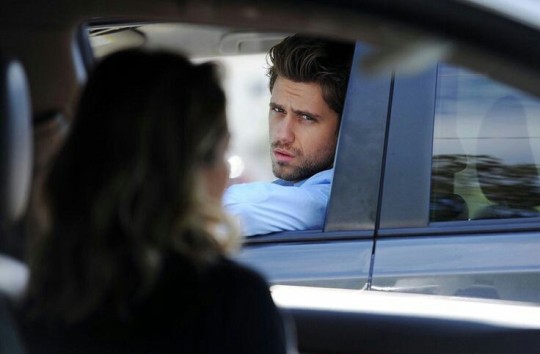
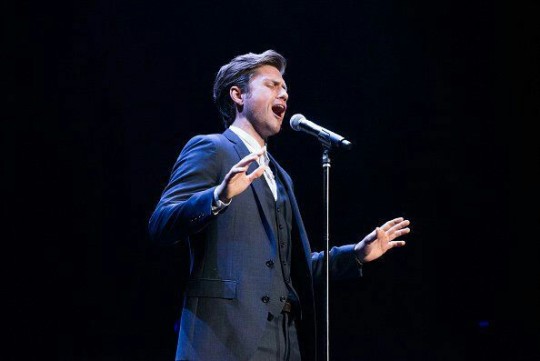
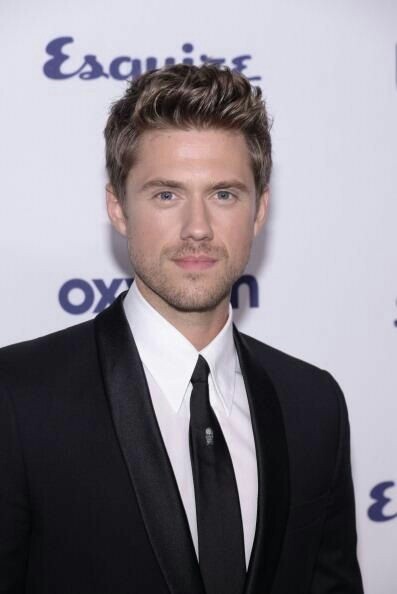
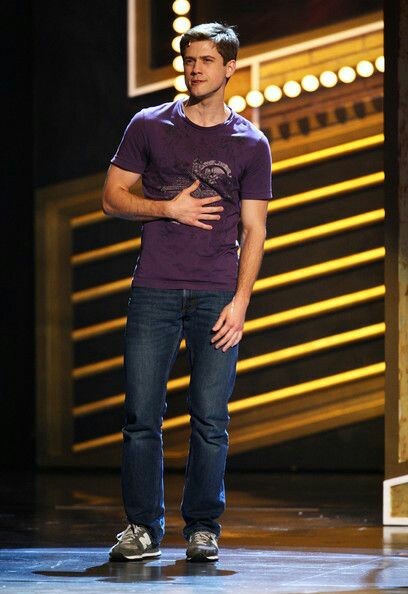

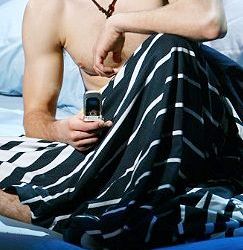

#aaron tveit#musical#les miserables#broadway#graceland#brain dead#next to normal#catch me if you can#hairspray#wicked#moulin rouge#rent#grease#gossip girl
117 notes
·
View notes
Text
NEW YORK, NY – August 21, 2024 — Great American Family, a leader in the production of high-quality, Original Christmas movies, announced start of production for Home Sweet Christmas, a World Premiere Original Movie, starring Candace Cameron Bure (“Ainsley McGregor Mysteries,” A Christmas Present, My Christmas Hero) and Cameron Mathison (A Kindhearted Christmas, A Merry Christmas Wish, “General Hospital”), which premieres during the network’s beloved franchise, GREAT AMERICAN CHRISTMAS 2024. [Note to Editors: Previously announced Jingle Bells, Wedding Bells will not go into production in 2024].
In Home Sweet Christmas, Sophie Marlow (Bure), a successful mergers and acquisitions attorney, is called home to Waynesbridge, Washington, following her great uncle’s passing. Uncle Henry left Sophie 60% ownership in his Marlow Maple Meadows, a sprawling patch of sugar maple forest. Though Sophie hasn’t been on the property in decades, she immediately begins retracing the happy steps of her youth before encountering Sam (Mathison), her long-lost, childhood friend. Sam has returned to the farm after learning Henry left him the other 40% of the property. The legacy property means a quick sale is likely, though Sophie and Sam will discover neither of them is ready to let go just yet.
Home Sweet Christmas is a Syrup Studios production in association with Candy Rock Entertainment. Mick MacKay serves as Producer, and Paula Elle directs an original screenplay written by Kevin Commins and Robin Dunne. Executive producers include Candace Cameron Bure, Ford Englerth, Jeffery Brooks, Holly A. Hines, Eric Jarboe, Gerald Webb, Trevor McWhinney, Paula Elle, and Martin Wood. Supervising Producers include Jonathan Shore, Robyn Wiener, Michael Shepard, and David Oland serves as Associate Producer.
ABOUT GREAT AMERICAN FAMILY
As the flagship linear TV network of Great American Media, Great American Family is America’s premiere destination for quality family-friendly programming, featuring original Christmas movies, rom-coms and classic series that celebrate faith, family and country. Founded in 2021, Great American Family is home to year-round seasonal celebrations the whole family can enjoy together, including Great American Christmas, the network’s signature franchise featuring holiday themed movies and specials. Great American Family is available in 50 million households via cable and satellite providers; visit https://www.greatamericanfamily.com/channel-finder/ or text FAMILY to 877-999-1225 to find your local channel.
ABOUT CANDY ROCK ENTERTAINMENT:
Candy Rock Enterprises is a joint venture between award winning actress, producer and New York Times best-selling author Candace Cameron Bure and the full-service development and execution team behind Redrock Entertainment, Ford Englerth and Jeffery Brooks. Candy Rock’s Entertainment division develops, produces, and distributes television projects, lifestyle programming and feature length films with an emphasis on family-friendly content. Instagram: @CandyRock.Entertainment
ABOUT SYRUP STUDIOS:
Syrup Studios is a Canadian deficit-financing studio focused on exceptional films, series, and international co-productions for global audiences. Syrup’s highly tailored approach to developing, financing, producing, and distributing content through entrepreneurial business models brings each compelling story to life.
MEDIA CONTACTS:
Pam Slay
Network Program Publicity & Talent Relations
818.415.3784
2 notes
·
View notes
Photo

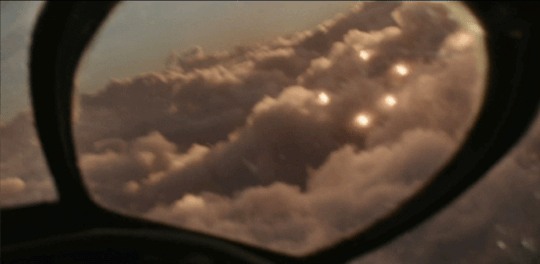





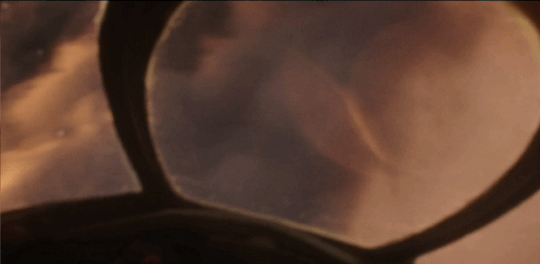
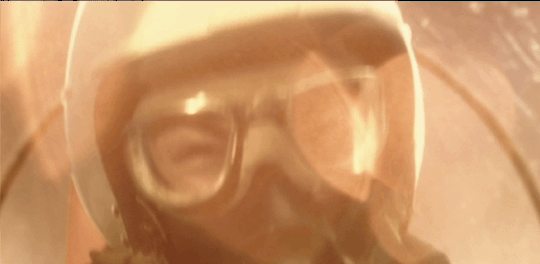
On July 19, 1952, seven unidentified flying objects were detected in Washington DC’s restricted airspace. Fighter jets were deployed to intercept the bogies, but they were observed to fly at speeds in excess of some seven thousand miles per hour, far beyond the capabilities of any fighter jet in the Air Force’s arsenal. These UFOs were seen flying around DC airspace that year from July 12 to 29, and was reported by multiple civilians, military personnel, politicians. The incident was well recorded in Project Blue Book, the only official US government program to investigate UFOs from March 1952 to its termination in December 1969.
To this day, the US government has not provided the public an explanation as to the events of that day, nor on what exactly UFOs are.
But there are abundant references in ancient world religions concerning mysterious flying objects sometimes known as “bird-men,” “angels.”
One particularly insightful account comes from an 11th-century AD Hindu text named the Samarangana Sutradhara, in where references to ancient aircraft termed vimanas are made:
“The aircraft which can go by its own force like a bird - on the earth or water or through the air - is called a Vimana. That which can travel in the sky from place to place is called a Vimana by the sage of old.
The body must be strong and durable and built of a light wood [Lagha-daru], shaped like a bird in flight with wings outstretched [mahavinhanga]. Within it must be placed the mercury engine, with its heating apparatus made of iron underneath.
In the larger craft [Daru-vimana], because it is built heavier, [alaghu], four strong containers of mercury must be built into the interior. When these are heated by controlled fire from the iron containers, the Vimana possesses thunder power through the mercury. The iron engine must have properly welded joints to be filled with mercury, and when the fire is conducted to the upper parts, it develops power with the roar of a lion. By means of the energy latent in mercury, the driving whirlwind is set in motion, and the traveller sitting inside the Vimana may travel in the air, to such a distance as to look like a pearl in the sky.”
(Video from the series Project Blue Book, Season 1, Episode 10: The Washington Merry-Go-Round)
10 notes
·
View notes
Text
"Attack on American Free Enterprise System"
That about adding Regan's inauguration got me to thinking. I wonder of there's a correlation between the recipients of The Powell Memo and financial contributors to Ronald Reagan's election campaign.
On August 23, 1971, less than two months before he was nominated to serve as an Associate Justice of the Supreme Court of the United States, Lewis F. Powell, Jr. mailed a confidential memorandum to his friend Eugene B. Sydnor, Jr., Chair of the Education Committee of the U.S. Chamber of Commerce. The memo was titled Attack On American Free Enterprise System and outlined ways in which business should defend and counter attack against a "broad attack" from "disquieting voices."
Initially the memo was viewed, and praised, by only a select few within the Chamber. That all changed on September 28 & 29, 1972, when the leaked document was the topic of negative treatment in syndicated newspaper columnist Jack Anderson's Washington Merry Go Round. With quotations from the document now public, the Chamber published it in full in Washington Report, the Chamber's newsletter. An off-print of the memo was made available to anyone requesting it from the Chamber.
Interest in the memorandum was revived in the early 1990s. The Alliance for Justice's 1993 report, Justice for Sale, mentions it prominently. The case for the memo being a seminal document in the neoconservative movement in the U.S. was made in 2000 with the publication of John B. Judis’s The Paradox of American Democracy. The Internet became a medium for access to the memo and for posting articles about it. Mediatransparency.org was one of the first World Wide Web sites to feature the memo, as was the official site of the U.S. Chamber of Commerce. Today the memo is both credited as having "changed America" and scorned as being "far out of touch with the concerns and structures of the current right."
Whatever it's influence, it has been and remains today the single most requested document in the Lewis F. Powell, Jr. Papers. On the fortieth anniversary of its creation, the Powell Archives has here assembled links to the memo and related documents from the Powell Papers. Lyman Johnson, Robert O. Bentley professor of law at Washington and Lee university School of Law, also wrote this piece in commemoration of this anniversary.
2 notes
·
View notes
Text
They were both approached for elected office, but both demurred. Given what they now knew about politics, they wanted no part of that merry-go-round. 'Imagine doing that bullshit every day', said Etta in a surprisingly crude comment, 'begging, cadging, wheedling, and sucking off for money. No thanks'
0 notes
Text
60 Hip-Hop ‘Firsts': Rap’s Must-Know Milestones
Dave LiftonPublished: August 10, 2018

Play DJ Kool Herc
on Amazon Music Unlimited (ad)
Aug. 11, 1973 is widely considered to be the day that hip-hop was born, when DJ Kool Hercbrought out his "merry-go-round" style of record-spinning during a party at 1520 Sedgewick Ave., in the Bronx, N.Y. Since then, hip-hop has grown, both as an art form and in popularity. We've compiled the must "must-know" milestone moments in its history, from before the first single was released up to the present day, in our list of 60 Hip-Hop Firsts.
1. First Female Rapper: MC Sha-Rock of Funky 4 + 1 (1976)
As crews came together around the new sound, the Funky 4+1 stood out, largely because of the "plus one": Sharon Green, aka MC Sha-Rock, the first female MC. Even before they put out their first record, 1979's "Rappin & Rocking the House," she established herself by going toe-to-toe in battle raps with male counterparts such as Grandmaster Flash.
2. First Single: Fatback, '“King Tim III (Personality Jock)" (1979)
While the origins of rap can be traced back to the spoken-word-over-music recordings by the Last Poets and Gil Scott-Heron, the first commercially available single rooted in DJ Kool Herc's creation was “King Tim III (Personality Jock)" by Fatback, a funk/disco group that had been around since 1972. "King Tim" refers to Tim Washington, who provided the vocals. Originally released as the b-side of "You're My Candy Sweet" on March 25, 1979, DJs opted for the flip side and the track reached No. 26 on Billboard's Hot Soul Singles chart. The line "A little left hand, right hand in the air / And you sway 'em like you just don't care" is believed to be the first recorded instance of what would soon become "Throw your hands in the air / And wave 'em like you just don't care."
3. First Rap Song to Chart on the Hot 100: The Sugarhill Gang, "Rappers Delight" (1979)
'“King Tim III (Personality Jock)" may have been the first commercially available rap single, but not by long. Only a few months later, on Aug. 2, 1979, the Sugarhill Gang released "Rapper's Delight." And possibly because it outperformed Fatback, peaking just inside the Top 40 at No. 36, it became widely accepted, erroneously, that "Rapper's Delight" was the first rap single.
4. First Hip-Hop Radio Show: Mr. Magic's Disco Showcase (1979)
John "Mr. Magic" Rivas, a member of the Juice Crew from the Queensbridge housing project in Queens, N.Y., began spinning hip-hop records during his Disco Showcase on WHBI 105.9 FM. The two-hour program began at 2AM and Rivas paid $75 an hour for the airtime. Three years later, he moved to WBLS, a much bigger station, and rebranded the show as Rap Attack. Marley Marl served as his DJ and sidekick until Rivas left the station in 1989. Whodini paid tribute to him with "Magic's Wand"
5. First Single by a Female Group: The Sequence, "Funk You Up" (1979)
Twenty years before her breakthrough as a solo artist, Angie Stone, then calling herself "Angie B," was a member of Columbia, S.C.'s the Sequence with Cheryl "The Pearl" Cook and Gwendolyn "Blondy" Chisolm. After getting backstage at a Sugarhill Gang concert and proving themselves to Sugar Hill Records founder Sylvia Robinson, they got signed and recorded "Funk You Up," the second single ever on the label. It peaked at No. 15 on Billboard's Hot Soul Singles chart and they released nine more singles -- two of which charted -- and three albums for the label. In 2017, they sued Bruno Mars and Mark Ronson on the grounds that "Uptown Funk" was too similar to their biggest hit.
6. First Rap Video: "Rapper's Delight" (1979)
The Sugarhill Gang made good use of their 1979 appearance on the syndicated New Jersey-based Soap Factory Disco Show, turning the surprisingly high-quality production into rap's first video. Multiple sources state that Whodini's "Magic's Wand" was the first officially commissioned video, but the clip currently can't be found on the internet.
7. First Rapper to Sign With a Major Label: Kurtis Blow (1979)
Even though so many major labels had offices in New York, it was a British company that became the first to sign a rapper, Kurtis Blow. As he told All Hip-Hop, he cut a record called "Christmas Rappin'," which producers J.B. Moore and Robert Ford unsuccessfully shopped around to 22 labels before John Stains of Mercury made a deal.
8. First Album: The Sugarhill Gang, The Sugarhill Gang (1980)
Hip-hop took its first tentative steps into the album format in 1980. The Sugarhill Gang’s self-titled effort from February of that year is widely considered to be the first full-length rap album. However, Sugar Hill Records founder Sylvia Robinson reportedly didn’t think people were ready to buy an entire long-player featuring nothing but rap music. So alongside a handful of songs in the style of “Rapper’s Delight” you’ll also find a full side's worth of R&B ballads and instrumental disco tracks.
Kurtis Blow's September 1980 eponymous album is credited as the first to be released by a major label. The Sequence also released their debut full-length effort that year, and multi-artist compilations such as the The Great Rap Hits and Rap… Rap… Rap… began to appear on record shelves around this time.
9. First Gold Single: Kurtis Blow, "The Breaks" (1980)
One of the conditions of Blow's deal allowed him to record a second if "Christmas Rappin'" sold 30,000 copies. It sold 373,000, which led to his self-titled debut and the follow-up single, "The Breaks." Once again, Blow defied expectations, reaching No. 4 on the R&B chart and selling 940,000 copies to become the first rap single to be certified gold.
10. First to Appear on National Television: Kurtis Blow, Soul Train (Sept. 27, 1980)
The ultimate tastemaker for black America, Soul Train, took note of hip-hop's growing popularity when they brought Blow on for "The Breaks" during their Sept. 27, 1980 episode. Also appearing on the show were L.T.D. and Seventh Wonder.
11. First Beef: Kool Moe Dee vs. Busy Bee (1981)
Given that boasting and trading insults has long been a part of African American music -- see Otis Redding and Carla Thomas' "Tramp" for a perfect example -- it's all-but impossible to pinpoint the start of battle rapping. The earliest we could find was Kool Moo Dee's slaying of Busy Bee at a contest at Harlem World in 1981.
12. First Rappers on Saturday Night Live: Funky 4+1 (Feb. 14, 1981)
Deborah Harry of Blondie served as both the host and musical guest on the Valentine's Day 1981 episode of Saturday Night Live. In addition to singing covers of Teddy Pendergrass' "Love TKO" and Devo's "Come Back Jonee," she also brought along the Funky 4+1 to perform "That's the Joint." As Blondie guitarist, and Harry's then-boyfriend Chris Stein told WaxPoetics, "[T]hey let us pick a musical guest to be on with us," he said. "The people on the show were so nervous about them doing it. I remember trying to explain to them how scratching worked. Trying to verbalize what that is for someone who has no idea, it’s really difficult.” Instead, the group wound up rapping to a backing tape. You can see their performance at the 11-minute mark of the video above, right after Harry introduces them as "among the best street rappers in the country" and "her friends from the Bronx."
13. First No. 1 Hot 100 Song With a Rap, Blondie, "Rapture" (March 28, 1981)
Six weeks after Saturday Night Live, Blondie's "Rapture" began its two-week stint at No. 1. The track concluded with a rap by Harry that gave a shout-out to both Fab Five Freddy and Grandmaster Flash. Harry had been hip to them since 1977. "She said, 'I'm going to write a rap about you on my next record.' And I was like, 'Yeah, right," Flash told the Daily News. "And about five or six months later, 'Eatin' cars and . . . eat up bars . . . and Flash is fast, Flash is cool.' She kept her word. ... "I was introduced. So now ...white people and people of other colors were, 'Who is Flash?' So she tremendously opened the door."
14. First National News Story About Hip-Hop: 20/20 (July 1981)
Eight years after DJ Kool Herc's party, ABC's 20/20 news magazine show devoted a segment to the "overnight phenomenon" of rap by Steve Fox. He credited "Rapture" for bringing it to the masses and also pointed out its deep roots in African American traditions. Fox concluded by predicting that rap would become a cultural force because "it lets ordinary people express ideas they care about, in language they can relate to, put to music they can dance to. Not everyone can sing, but everyone can rap." "That's marvelous," host Hugh Downs said.
15. First International Tour: New York City Rap Tour (November 1982)
Before hip-hop had ventured out into America, it had gone global. Bernard Zekri, a French journalist who was living in New York, had fallen in love with rap and decided to take it to his native country. In November 1982, thanks to Roxy founder Kool Lady Blue, the New York City Rap Tour brought the nascent culture to France and London, with performances by Afrika Bambaataa and the Soulsonic Force, Fab 5 Freddy, Grandmaster D.ST and the Infinity Rappers, Futura 2000, Dondi, Rammellzee, the breakdancing Rock Steady Crew, and the World Champion Fantastic Four Double Dutch Girls. "They had this whole show," David Hershkovits, who covered it for the Daily News, recalled in Jeff Chang's Can't Stop Won't Stop: A History of the Hip-Hop Generation. "It wasn't just a band, it was the graffiti and the breakdancers and the DJs and the whole experience."
16. First Hip-Hop Movie: Wild Style (1983)
Written, directed and produced by Charlie Ahearn, 1983's Wild Style told the story of a graffiti artist (real-life artist Lee Quinones) and features Grandmaster Flash, Fab 5 Freddy, Busy Bee and others. As a part of New York's downtown art scene, Ahearn had been observing the intersection of graffiti and rap cultures for a few years and decided to chronicle it.
"I was interested in making a pop movie," he told Red Bull Music Academy. "I knew that I should be documenting this thing, but I hated the idea of making a documentary. So the question is how can I make a pop movie out of this thing? To me, the Bruce Lee movies were the thing that I was most excited by. You go to 42nd Street, you go to see kung fu movies. I wanted something that could be on that level, something that could show on 42nd Street. My idea was to do what excited me most. There was no historical perspective. Let’s go on this trip, it’s like a cartoon version of what was happening."
17. First Rap Group Signed to a Major Label: The Fearless Four (1983)
After a pair of successful singles on Enjoy, including "Rockin' It," Harlem's Fearless Four jumped to Elektra. They released two singles for the label, "Just Rock" and "Problems of the World," the latter of which was produced by Kurtis Blow.
18. First Hip-Hop Radio Station: KDAY 93.5 FM, Los Angeles (1983)
At a time when rap was still considered a fad, Greg Mack was hired to be the music director at KDAY 1580-AM in Los Angeles. He convinced his bosses to allow him to add rap to the station's playlists, first in the evening and, when the ratings jumped, in the afternoon during his "Mack Attack" show. The station would soon go all hip-hop and Mack's program became the place for those on the rising West Coast scene to be heard.
19. First Hollywood Movie With Breakdancing: Flashdance (1983)
A year before Beat Street and Breakin', filmgoers got to see breakdancing on the big screen via a scene in Flashdance. Irene Cara, who sang the movie's No. 1 theme song, included a song called "Breakdance" on her album What a Feelin'. It reached No. 8 and was her last Top 10 hit.
20. First Music Video Show Dedicated to Hip-Hop: Video Music Box (April 1984)
Before MTV decided to start broadcasting rap videos, Ralph McDaniels, an engineer at WNYC-TV, and Lionel Martin created Video Music Box. With Whodini's "Five Minutes of Funk" as its theme, it became the place to see hip-hop in TV in New York, and Jay-Z and Nas watched it regularly. The show is still running, although it moved to WNYE-TV in 1996. "I knew this was a passion but I didn't see that it would go this long," McDaniels said.
21. First Gold Album: Run-D.M.C., Run-D.M.C. (Released March 27, 1984)
On the strengths of the singles "It's Like That," "Hard Times" and "Rock Box," Run-D.M.C.'s self-titled debut was the first hip-hop record to sell 500,000 copies. In his original Village Voicereview, Robert Christgau, the self-proclaimed "Dean of American Rock Critics" gave it a grade of A-. "It's easily the canniest and most formally sustained rap album ever," he wrote, "a tour de force I trust will be studied by all manner of creative downtowners and racially enlightened Englishmen. While their heavy staccato and proud disdain for melody may prove too avant-garde for some, the style has been in the New York air long enough that you may understand it better than you think. Do you have zero tolerance for namby-pamby bullshit? Do you believe in yourself above all? Then chances are you share Run-D.M.C.'s values."
22. First Hip-Hop Video Played on MTV: Run-D.M.C., "Rock Box" (1984)
Although "Rapture" was shown twice on the day that MTV launched, Aug. 1, 1981, it took them a few years to work rap videos by black acts into their rotation. That changed with Run-D.M.C.'s video for "Rock Box." But it would still take them four years to devote an entire show to hip-hop, when Yo! MTV Raps debuted in August 1988.
23. First U.S. Tour: 1984 Swatch Watch New York City Fresh Fest Tour (September 1984)
Hip-hop first ventured out on the road thanks to the 1984 Swatch Watch New York City Fresh Festival. Headlined by Run-D.M.C., the tour also starred Whodini, the Fat Boys, Newcleus, the Dynamic Breakers, Magnificent Force, Uptown Express, Dr. Jeckyll and Mr. Hyde, T. La Rock, with Kurtis Blow as host. According to Murray Forman's The 'Hood Comes First: Race, Space, and Place in Rap and Hip-Hop, it played 27 cities, beginning Labor Day Weekend in Greensboro, N.C., and took in $3.5 million, with five percent of proceeds going to the United Negro College Fund.
24. First Diss Track: Roxanne Shante, "Roxanne's Revenge" (1984)
In 1984, U.T.F.O. put out a track called "Roxanne, Roxanne," a rap about a girl who had rejected all the members of the crew. Shortly thereafter, a teenager called Lolita Shante Gooden was askedby Mr. Magic and Marley Marl to put a new rap over their beats. She assumed the identity of U.T.F.O.'s ire and rebranded herself as Roxanne Shante, slamming them in "Roxanne's Revenge." That began the famous "Roxanne Wars," with U.T.F.O. responding by finding their own woman who called herself "The Real Roxanne." Over the next year, dozens of people portraying members of her family, doctor and even someone who claimed that Roxanne was a man, recorded answer songs.
25. First Rap Album to Be Released on CD: Run-D.M.C., King of Rock (Jan. 21, 1985)
Two and a half years after compact discs first became commercially available in stores, hip-hop went digital. Possibly because of the unprecedented success of the first album, Profile was able to press King of Rock on CD. The record slightly improved on the chart successes of its predecessor, peaking at No. 52 on the 200 Albums chart and at No. 12 at R&B, where Run-D.M.C. had reached Nos. 53 and 14, respectively.
26. First High-Profile Hip-Hop Couple: Salt and Hurby "Luv Bug" Azor (1985)
Cheryl "Salt" James met Sandra "Pepa" Denton when they were students at Queensborough Community College and started calling themselves Super Nature. James' boyfriend, Hurby "Luv Bug" Azor, asked them to record a song he wrote for a project at the Center of Media Arts, an answer to Doug E. Fresh's "The Show." The single, "The Show Stoppa (Is Stupid Fresh)," became a hit and they changed their name to Salt-n-Pepa. Azor would write and produce the bulk of Salt-n-Pepa's material over the next decade.
27. First Platinum Album: Run-DMC, Raising Hell (Released May 15, 1986)
If King of Rock defied those who thought rap wouldn't last, Raising Hell served as the proof of its staying power. It not only reached No. 3 and topped the R&B chart, it became the first to sell one million copies, with its platinum certification coming on July 15, 1986. Within a year, it would sell three million and new fans went back and bought King of Rock, which went platinum on Feb. 18, 1987.
28. First Hip-Hop / Rock Crossover: Run-D.M.C. & Aerosmith, "Walk This Way" (1986)
Raising Hell's success was bolstered by a bonafide pop smash. Run-D.M.C. had used the opening of Aerosmith's 1975 hit "Walk This Way" as break, but didn't know the whole song until producer Rick Rubin played it for them and suggested they cut their own version.
"I went through my whole album collection looking for a song that Run-D.M.C. could do that would point out the relationship between hip-hop and other kinds of music," Rubin said. "'Walk This Way' had a familiar rock sensibility to it, but at the same time, with very little change, would function as a hip-hop song."
Rubin brought in Aerosmith singer Steven Tylerand guitarist Joe Perry, who had only recently reunited, to be on the song and the video, which saw Tyler, quite symbolically, breaking a hole in the wall that separated hip-hop and rock.
29. First No.1 Album: Beastie Boys, Licensed to Ill (Released Nov. 15, 1986)
Rubin took the hard-rock-meets-hip-hop approach even further with one of his signings to Def Jam, an all-white trio from New York that had switched from hardcore punk to rap, the Beastie Boys. Packed with Led Zeppelin and AC/DC samples, and even an appearance from Slayer guitarist Kerry King, Licensed to Ill was loud, brash and snotty, and it did the trick. On March 7, 1987, it topped Billboard's 200 Albums chart and stayed there for seven weeks.
30. First Rappers on the Cover of Rolling Stone: Run-D.M.C. (Dec. 4, 1986)
With a story called "Run-D.M.C. Is Beating the Rap," Rolling Stone finally put a hip-hop act on its cover. The piece, by Ed Kiersh, portrayed them as thoughtful, middle-class young men from Hollis, Queens who were adjusting to their fame and took their status as role models seriously. But they also had to defend themselves against the idea that their music promotes violence, following a series of incidents during their tour, including a fight between the Bloods and the Crips at the Long Beach Arena that summer.
31. First Gold and Platinum Album by Women: Salt-n-Pepa, Hot, Cool & Vicious (Released Dec. 8, 1986)
Despite the groundbreaking work by MC Sha-Rock, the Sequence and Roxanne Shante, women rappers didn't achieve mainstream success until Salt-n-Pepa's debut, Hot, Cool & Vicious. Featuring the Top 20 hit "Push It," it became not only the first rap album by a female act to go gold, but also platinum.
32. First Rappers on the Cover of Spin: Beastie Boys (March 1987)
Although Spin had marketed itself as more hip-hop friendly than the rock-focused Rolling Stone, they still took three months longer than its rival to put rappers on their cover. Scott Cohen's "Crude Stories: Meet the Beastie Boys" was a portrait of the "rudest, loudest, deffest, most obnoxious rappers in the world" that was the opposite of Rolling Stone's piece on Run-D.M.C. As recounted in Dan Charnas' The Big Payback: The History of the Business of Hip-Hop, Henry Allen, a friend of Chuck D, wrote a letter to the editor taking the magazine to task for putting a white hip-hop group on the cover.
33. First Rap LP to Receive an Explicit Lyrics Warning Sticker: Ice-T, Rhyme Pays (July 28, 1987)
In 1990, the Recording Industry Association of America, after years of pressure from the Parents Music Resource Center, began rolling out the "Parental Advisory: Explicit Lyrics" sticker on albums with content that may be unsuitable for youngsters. Perhaps fittingly, Banned in the U.S.A.by 2 Live Crew, who were in the midst of their obscenity trial over As Nasty as They Wanna Be, was the first record to be affixed with the now-familiar black-and-white sticker. But three years prior, Ice-T warned potential listeners of explicit content on the cover of his debut, Rhyme Pays.
34. First Double Album: DJ Jazzy Jeff & the Fresh Prince, He's the DJ, I'm the Rapper (March 29, 1988)
The breakthrough record by DJ Jazzy Jeff and the Fresh Prince contained 85 minutes of music, forcing it to be put on two vinyl records. In order to make it fit onto a 72-minute CD, seven songs -- "Nightmare on My Street", "As We Go", "D.J. on the Wheels," "He's the D.J., I'm the Rapper," "Hip Hop Dancer's Theme," "Jazzy's in the House" and "Human Video Game" -- were edited and "Another Special Announcement" was removed entirely.
35. First Album by a Solo Female Rapper: MC Lyte, Lyte as a Rock (Sept. 13, 1988)
It took nearly two years after Salt-n-Pepa struck platinum for a female rapper to release a solo album. But MC Lyte made up for lost time with the heralded Lyte as a Rock. Featuring the No. 1 Rap Single "Paper Thin," the record launched her career, which has seen her branch out into acting, artist management and philanthropy.
36. First Platinum Single: Tone-Loc, "Wild Thing" (Oct. 15, 1988)
Once again, rock and hip-hop combined to make history. Tone-Loc's No. 2 smash "Wild Thing" had the requisite hard rock sample (Van Halen's "Jaime's Cryin'") and a video that put its own spin on Robert Palmer's "Addicted to Love" clip to cross over into the mainstream in then-record numbers for a rap single. It was certifiedplatinum and double platinum on Feb. 3, 1989.
37. First Grammy for Best Rap Performance: DJ Jazzy Jeff & the Fresh Prince, "Parents Just Don't Understand" (Feb. 22, 1989)
A decade after "Rapper's Delight," the Grammys could no longer ignore hip-hop's role in American culture. DJ Jazzy Jeff & the Fresh Prince's "Parents Just Don't Understand" was perhaps an obvious choice for the first award, in a field that contained J. J. Fad ("Supersonic"), Kool Moe Dee ("Wild Wild West"), LL Cool J ("Going Back to Cali") and Salt-n-Pepa ("Push It"). Although even then it caused controversy when the RIAA announced that the presentation of the award would not be televised. In response, Russell Simmons and Lyor Cohen of Def Jam organized a boycott, with Public Enemy and Slick Rick among those who took part.
38. First Song to Top the Hot Rap Songs Chart: Stop the Violence Movement, "Self-Destruction" (March 11, 1989)
A month after the Grammys, Billboard debuted its own chart to list the most popular hip-hop songs in the country. Its inaugural No. 1 was "Self-Destruction" by the Stop the Violence Movement. After the 1987 killing of his Boogie Down Productions partner Scott La Rock, KRS-One brought together some of his fellow East Coast rappers -- including Public Enemy, Heavy D, MC Lyte, Doug E. Fresh and Kool Moe Dee -- to denounce violence. Proceeds were donated to the National Urban League. The song remained atop the chart for five weeks.
39. First to Get in Trouble With the FBI for Their Lyrics: N.W.A. (Aug. 1, 1989)
A year after the release of N.W.A.'s Straight Outta Compton, Priority Records received a letter from Milt Ahlerich, the assistant director for the Office of Public Affairs at the FBI on official stationery. Without specifically naming "Fuck tha Police," he claimed one of their songs "encourages violence against and disrespect for the law enforcement officer" and told them that 152 officers had been killed in the line of duty in the past two years. Speaking to The Washington Post, Ahlerich denied that he was trying to put governmental pressure on the band or its label, but rather address concerns within Bureau over violence directed at police officers. Barry Lynn of the American Civil Liberties Union called the letter "intimidating. ... It's designed to get Priority to change its practices, policies and distribution for this record, and that's the kind of censorship by intimidation that the First Amendment doesn't permit."
40. First Diamond Album: MC Hammer, Please Hammer, Don't Hurt 'Em (Feb. 12, 1990)
The statistics on MC Hammer's third disc, Please Hammer, Don't Hurt 'Em, are astounding, especially given how hip-hop was still widely considered a novelty only a few years earlier. It spent 21 weeks atop the Billboard 200 and 28 weeks at No. 1 on the Top R&B/Hip-Hop Albums chart. On April 15, 1991, only 14 months after its release, it was certified diamond platinum for sales in excess of 10 million copies.
41. First Rapper to Be Nominated for a Best New Artist Grammy: Tone-Loc (Feb. 21, 1990)
Tone-Loc's success earned him a Grammy nomination for Best New Artist, and two other acts with hip-hop leanings, Neneh Cherry and Soul II Soul, were also recognized, as was the folk duo Indigo Girls. But the winners were Milli Vanilli, whose award was rescinded nine months later when group mastermind Frank Farian was forced to admit that Fab Morvan and Rob Pilatus, who represented them in the videos and onstage, did not sing on their album.
42. First Rapper on the Cover of Major U.S. News Magazine: Tone-Loc (March 19, 1990)
As hip-hop was dominating the charts, one of mainstream America's two most widely read news magazines took notice. Newsweek's coverboasted "Rap Rage" in big letters, followed by "Yo! Street rhyme has gone big time. But are those sounds out of bounds?" But who did they choose to represent the anger? Tone-Loc, hardly the most controversial or threatening rapper on the scene. Reportedly Newsweek were debating between Tone-Loc and LL Cool J for the cover.
43. First Full Rap Song to Top the Hot 100: Vanilla Ice "Ice Ice Baby" (Nov. 3, 1990)
In the midst of what became known as the "golden age" of hip-hop, rap finally got a song to top Billboard's Hot 100. But it wasn't one of the defining tracks by critical favorites like Public Enemy, the Native Tongues groups or the up-and-coming West Coast gangstas. Instead, it was "Ice Ice Baby" by Vanilla Ice, the much-derided, Queen-sampling Dallas rapper whose label had created a fake bio in order to boost his street cred.
44. First Grammy Award for Best Rap Solo Performance: MC Hammer, "U Can't Touch This" (Feb. 20, 1991)
Two years after debuting a category for rap (Young MC's "Bust a Move" won in 1990), the Grammys added a second to distinguish between solo acts and groups (although not between albums and songs). They went with MC Hammer's "U Can't Touch This," which beat out Queen Latifah's All Hail the Queen album, Big Daddy Kane's "I Get The Job Done," Vanilla Ice's "Ice Ice Baby" and Monie Love's "Monie In The Middle."
45. First Grammy Award for Best Rap Performance by a Duo or Group: Quincy Jones, Big Daddy Kane, Ice-T, Kool Moe Dee, Melle Mel & Quincy Jones III, "Back on the Block" (Feb. 20, 1991)
For the second award dedicated to hip-hop that night, voters gave the Grammy to longtime favorite Quincy Jones for his star-studded "Back on the Block" over Digital Underground ("The Humpty Dance"), DJ Jazzy Jeff & The Fresh Prince (the And in This Corner... album), Public Enemy (Fear of a Black Planet) and the West Coast Rap All-Stars ("We're All in the Same Gang").
46. First Rapper to Meet a President: Eazy-E: (March 18, 1991)
Even as the culture wars over rap lyrics continued, Eazy-E and N.W.A. manager Jerry Heller were invited to lunch with President George H.W. Bush and the Republican Senatorial Inner Circle by Senate Minority Leader Bob Dole. According to Heller in his book Ruthless, the invitation came as a result of a donation Eazy-E made to a South Central charity and the meal consisted of poached salmon and roast beef -- and that Eazy-E was stoned. But the rapper denied that he was a Republican, or even political. "How the fuck can I be a Republican when I got a song called 'Fuck tha Police?'" he said. "I ain't shit—ain't a Republican or Democrat. I didn't even vote. My vote ain't going to help! I don't give a fuck who's the president."
47. First Rapper to Launch a Clothing Line: Christopher "Play" Martin (1991)
With his star on the rise thanks a pair of gold records and the hit House Party movies, Christopher "Play" Martin of Kid 'n Play opened up a boutique featuring his own designs called IV Plai, taking over an old game room in his hometown of East Elmhurst, Queens, N.Y. "I love fashion," he told The New York Times. "And I knew I would give back to the neighborhood when I could. ... There is this fear in the entertainment business that you'll end up going back to your old job at Burger King. I'm going to make sure that never happens."
48. First Rappers to Win a Grammy in a Non-Rap Category: Arrested Development (Feb. 24, 1993)
Prior to 1993, rappers had only won Grammys in their designated categories. That changed when Arrested Development beat out Billy Ray Cyrus, Sophie B. Hawkins, Kris Kross and Jon Secada for Best New Artist thanks to their album 3 Years, 5 Months and 2 Days in the Life Of... The record was one of the most popular socially conscious hip-hop records of its day.
49. First Platinum Album by a Solo Female: Da Brat, Funkdafied (June 28, 1994)
Funkdafied introduced the world to Shawntae Harris, aka Da Brat, who was all of 20 when it was released. It topped the Top R&B/Hip-Hop Albums chart and went platinum on Jan. 6, 1995. She'd break the million mark again with 2000's Unrestricted.
50. First Hip-Hop Video Game: Rap Jam: Volume One (January 1995)
Released for the Super Nintendo Entertainment System in 1995, Rap Jam: Volume One featured such popular rappers as Coolio, House of Pain, Queen Latifah, Warren G and Onyx playing one-on-one on the streets of five cities. Each rapper had their own special move, and no fouls were called. A second volume was never produced.
51. First Rap Double Album to be Released on CD: Various Artists, Down South Hustlers: Bouncin' and Swingin' (Oct 31, 1995)
As discussed above, DJ Jazzy Jeff and the Fresh Prince's He's the DJ, I'm the Rapper was edited to fit on a single CD, but no such changes were made to Master P's No Limit two-disc compilation, which featured "Playaz from the South," his hit with UGK and Silkk the Shocker. A few months later, on Feb. 13, 1996, 2Pacdropped his own double album, All Eyez on Me.
52. First Artist to Have Two No. 1 Albums in One Year: 2Pac, All Eyez on Me and The Don Killuminati: The 7 Day Theory (1996)
As if All Eyez on Me being a double album didn't prove how creative 2Pac was at the end of his life, nine months later he posthumously put out The Don Killuminati: The 7 Day Theory, which was credited to Makaveli. Its title referred to how much time he spent working on it -- three days to record his vocals and another four to mix it -- during the first week of August 1996, only a month before he was fatally shot on Sept. 7, 1996. Both albums went to No. 1
Two years later, DMX also hit the top spot twice in one year when he put out Flesh of My Flesh, Blood of My Blood only seven months after It’s Dark and Hell is Hot. He did it because Island Def Jam boss Lyor Cohen offered him $1 million if he did.
“I wanted to get that bonus,” DMX later told the Fader. ‘So I wasn’t playing with that show studio shit.” Indeed, he and his production crew took over numerous New York City recording studios at once, and also recorded in Miami and Los Angeles. “I used to sleep at Powerhouse,” remembered producer Dame Grease. “I’d be in there eating turkey sandwiches, Chinese and sleeping on the boards. Just cranking, cranking, cranking around the clock. The energy was crazy.”
53. First Best Rap Album Grammy: Naughty by Nature, Poverty's Paradise (Feb. 28, 1996)
For five years, Grammy nominations given out to solo and group rappers could be for one song or a whole album. That changed in 1996 with the debut of the Best Rap Album category. That night, Naughty by Nature claimed the award, beating out 2Pac (Me Against the World), Bone Thugs-n-Harmony (E. 1999 Eternal), Ol' Dirty Bastard (Return to the 36 Chambers: The Dirty Version) and Skee-Lo (I Wish).
54. First Rap Album to Win Album of the Year Grammy: Lauryn Hill, The Miseducation of Lauryn Hill (1999)
The 1999 Grammy Album of the Year category was noteworthy from the start, as all five nominees were made by female artists or female-fronted bands. When Lauryn Hill’s solo debut The Miseducation of Lauryn Hill was named the first hip-hop album to win this honor, it became historic. Co-presenter Whitney Houstonmade sure everybody in the audience understood and acknowledged just how important the moment was, but Hill was and remains determined to stay focused on self-improvement. To that end, she says she gives all her trophies to her mother.
“If I walked downstairs every day, and I saw all of my achievements,” she told Manufacturing Intellect in 2000, ”it would be so easy to become complacent. ‘Ive got all of these, and look at those, I don’t need to do anything else.’ But life is continued work, it’s constant learning… I get really afraid of those little comforts, those things that make us feel like we did something great. Because I’ve done nothing, and I mean that sincerely.”
55. First Oscar for Best Original Song: Eminem, "Lose Yourself" from 8 Miile (March 23, 2003)
Starring in the semi-autobiographical 8 Milegave Eminem the opportunity to finish "Lose Yourself," a track he had demoed a few years earlier. “I had to make ["Lose Yourself" and "8 Mile"] while I was in the movie,” he toldFunkmaster Flex. “Because once I stepped out of that movie ... I wouldn’t feel like I was in [the character.]” But despite its massive success -- it spent nearly three months at No. 1 -- Eminem didn't even bother attending the Academy Awards. "I was sleeping that night," he continued. "I just felt like I had no chance of winning. ... At that point in my life, I always felt like rap never got its fair shake on anything."
Since then, two other hip-hop songs have won the Oscar for Best Original Song: "It's Hard Out Here for a Pimp" by Three 6 Mafia (Hustle & Flow) and "Glory" by John Legend and Common(Selma).
56. First to Reach 1 Million Downloads: Outkast, "Hey Ya" (2004)
The popularity of OutKast's Speakerboxx/The Love Below coincided neatly with the rise of Apple's iTunes music store. Their smash "Hey Ya" became the first song, in any genre, to be legally downloaded 1 million times from iTunes and other sites. The record's popularity -- it sold 10 million copies -- led Andre 3000 to focus less on music, preferring instead to follow other pursuits, like fashion and acting. "Now it’s more like a hobby for me, so I don’t think about it in that way," he said in 2017. "Even with Outkast — if we never do another album, I’m totally fine with that. When I was 25, I said I don’t want to be a 30-year-old rapper. I’m 42 now, and I feel more and more that way. Do I really want to be 50 years old up there doing that? When I watch other rappers that are my age I commend them, but I just wonder where the inspiration is coming from. At this stage I’m really more focused on what I am going to be doing 10 years from now. And I hope to God it won’t be rapping.”
57. First Rappers Inducted Into the Rock and Roll Hall of Fame: Grandmaster Flash and the Furious Five (March 12, 2007)
Three years after the earliest hip-hop recording acts had become eligible for the Rock and Roll Hall of Fame, Grandmaster Flash & the Furious Five were inducted. The news from the T.V. woke Melle Mel out of his sleep, but Grandmaster Flash didn't believe it. "There had been two false alarms on it," Flash told Reuters, "so when somebody called my house, I didn’t take it too serious, to be honest. But when they told me, I just looked at the phone, hung up and went on my merry way. The next morning I started getting a lot of calls, so I just said, 'Note to self: This is it.' But it’s wonderful, wonderful, wonderful. Later than sooner still beats never!"
They were inducted by Jay-Z, who surprised the crew with his appearance. Since then, five other hip-hop acts have been enshrined: Run-D.M.C., the Beastie Boys, Public Enemy, N.W.A. and Tupac Shakur. While there will always be a segment of society that doesn't believe hip-hop belongs in the Hall of Fame, Flash sees his induction as validation that his music is all part of the same lineage.
“When you go back into the ‘70s, into the ingredient years of hip-hop, I played rock,” he told Yahoo. “I actually produced tracks that sounded like rock, from rock samples; we were into the rock sound. My instrument is the turntable, and so, I was able to walk into the Rock and Roll Hall of Fame with my turntables. All I know is I’m in company with some of the greatest musicians of all time — some of the greatest guitar players, greatest drummers, greatest ax players, greatest keyboardists, greatest singers. It’s incredible.”
58. First Woman to Rap at the White House: MC Lyte (2015)
In celebration of the 50th anniversary of the legislation that created the National Endowment for the Humanities and the National Endowment for the Arts, President and Mrs. Obama threw A Celebration of American Creativity. The evening, broadcast on PBS, included MC Lyte, Usher, Smokey Robinson, blues legend Buddy Guy, Trombone Shorty and Broadway stars Audra McDonald and Brian Stokes Mitchell. Introduced by Queen Latifah, who called her "my mentor, my inspiration, my all in all, the 'Godmother of Hip Hop,'" MC Lyte performed her then-recent "Dear John" and her 1989 classic "Cha Cha Cha."
59. First to Win a Grammy Lifetime Achievement Award: Run-D.M.C. (2016)
Despite having never won a Grammy for any of their hit songs or albums (Raising Hell was nominated in 1986 for Best R&B Performance by a Duo or Group With Vocal), the RIAA recognized Run-D.M.C. with its Lifetime Achievement Award. Darryl McDaniels admitted to Rolling Stone that he was conflicted with the idea.
"I guess it’s cool," he said, "’cause — and I’m talking from my egotistical rap microphone stage right now — they shoulda gave it to me in ’86 when even Michael Jackson said there was nothing in the world more popular, not even him."
But at the same time, he felt those who came before him deserved it more: "[D]on��t acknowledge Run-D.M.C. until [you] give that award to Afrika Bambaataa and the Zulu Nation for 'Planet Rock.' Give that award first to Grandmaster Flash and the Furious Five, the first rap group to be inducted into the Rock & Roll Hall of Fame, and it’s a damn shame that nobody in hip-hop knows that, you know what I’m saying?"
Ruth Brown, Celia Cruz, Earth, Wind & Fire, Herbie Hancock, Jefferson Airplane, Linda Ronstadt were the other recipients that year.
60. First Pulitzer Prize for Music: Kendrick Lamar, DAMN (2018)
Kendrick Lamar's DAMN wasn't just the first hip-hop album to win the Pulitzer. It was the first recording in any genre that wasn't classical or jazz to earn the prestigious award in its 75-year history. The Pulitzer board called the album “a virtuosic song collection unified by its vernacular authenticity and rhythmic dynamism that offers affecting vignettes capturing the complexity of modern African-American life.”
Although Lamar publicly didn't say anythingmore than “It’s an honor … I’ve been writing my whole life, so to get this type of recognition – it’s beautiful" on the night he accepted the award, he later said that it was "one of those things that should have happened with hip-hop a long time ago."
"It took a long time for people to embrace us—people outside of our community, our culture—to see this not just as vocal lyrics," he told Vanity Fair, "but to see that this is really pain, this is really hurt, this is really true stories of our lives on wax. And now, for it to get the recognition that it deserves as a true art form, that’s not only great for myself, but it makes me feel good about hip-hop in general. Writers like Tupac, Jay-Z, Rakim, Eminem, Q-Tip, Big Daddy Kane, Snoop [Dogg] . . . It lets me know that people are actually listening further than I expected."
Sent from my iPhone
0 notes
Text
60 Hip-Hop ‘Firsts': Rap’s Must-Know Milestones
Dave LiftonPublished: August 10, 2018

Play DJ Kool Herc
on Amazon Music Unlimited (ad)
Aug. 11, 1973 is widely considered to be the day that hip-hop was born, when DJ Kool Hercbrought out his "merry-go-round" style of record-spinning during a party at 1520 Sedgewick Ave., in the Bronx, N.Y. Since then, hip-hop has grown, both as an art form and in popularity. We've compiled the must "must-know" milestone moments in its history, from before the first single was released up to the present day, in our list of 60 Hip-Hop Firsts.
1. First Female Rapper: MC Sha-Rock of Funky 4 + 1 (1976)
As crews came together around the new sound, the Funky 4+1 stood out, largely because of the "plus one": Sharon Green, aka MC Sha-Rock, the first female MC. Even before they put out their first record, 1979's "Rappin & Rocking the House," she established herself by going toe-to-toe in battle raps with male counterparts such as Grandmaster Flash.
2. First Single: Fatback, '“King Tim III (Personality Jock)" (1979)
While the origins of rap can be traced back to the spoken-word-over-music recordings by the Last Poets and Gil Scott-Heron, the first commercially available single rooted in DJ Kool Herc's creation was “King Tim III (Personality Jock)" by Fatback, a funk/disco group that had been around since 1972. "King Tim" refers to Tim Washington, who provided the vocals. Originally released as the b-side of "You're My Candy Sweet" on March 25, 1979, DJs opted for the flip side and the track reached No. 26 on Billboard's Hot Soul Singles chart. The line "A little left hand, right hand in the air / And you sway 'em like you just don't care" is believed to be the first recorded instance of what would soon become "Throw your hands in the air / And wave 'em like you just don't care."
3. First Rap Song to Chart on the Hot 100: The Sugarhill Gang, "Rappers Delight" (1979)
'“King Tim III (Personality Jock)" may have been the first commercially available rap single, but not by long. Only a few months later, on Aug. 2, 1979, the Sugarhill Gangreleased "Rapper's Delight." And possibly because it outperformed Fatback, peaking just inside the Top 40 at No. 36, it became widely accepted, erroneously, that "Rapper's Delight" was the first rap single.
4. First Hip-Hop Radio Show: Mr. Magic's Disco Showcase (1979)
John "Mr. Magic" Rivas, a member of the Juice Crew from the Queensbridge housing project in Queens, N.Y., began spinning hip-hop records during his Disco Showcase on WHBI 105.9 FM. The two-hour program began at 2AM and Rivas paid $75 an hour for the airtime. Three years later, he moved to WBLS, a much bigger station, and rebranded the show as Rap Attack. Marley Marl served as his DJ and sidekick until Rivas left the station in 1989. Whodini paid tribute to him with "Magic's Wand"
5. First Single by a Female Group: The Sequence, "Funk You Up" (1979)
Twenty years before her breakthrough as a solo artist, Angie Stone, then calling herself "Angie B," was a member of Columbia, S.C.'s the Sequence with Cheryl "The Pearl" Cook and Gwendolyn "Blondy" Chisolm. After getting backstage at a Sugarhill Gang concert and proving themselves to Sugar Hill Records founder Sylvia Robinson, they got signed and recorded "Funk You Up," the second single ever on the label. It peaked at No. 15 on Billboard's Hot Soul Singles chart and they released nine more singles -- two of which charted -- and three albums for the label. In 2017, they sued Bruno Mars and Mark Ronsonon the grounds that "Uptown Funk" was too similar to their biggest hit.
6. First Rap Video: "Rapper's Delight" (1979)
The Sugarhill Gang made good use of their 1979 appearance on the syndicated New Jersey-based Soap Factory Disco Show, turning the surprisingly high-quality production into rap's first video. Multiple sources state that Whodini's "Magic's Wand" was the first officially commissioned video, but the clip currently can't be found on the internet.
7. First Rapper to Sign With a Major Label: Kurtis Blow (1979)
Even though so many major labels had offices in New York, it was a British company that became the first to sign a rapper, Kurtis Blow. As he told All Hip-Hop, he cut a record called "Christmas Rappin'," which producers J.B. Moore and Robert Ford unsuccessfully shopped around to 22 labels before John Stains of Mercury made a deal.
8. First Album: The Sugarhill Gang, The Sugarhill Gang (1980)
Hip-hop took its first tentative steps into the album format in 1980. The Sugarhill Gang’s self-titled effort from February of that year is widely considered to be the first full-length rap album. However, Sugar Hill Records founder Sylvia Robinson reportedly didn’t think people were ready to buy an entire long-player featuring nothing but rap music. So alongside a handful of songs in the style of “Rapper’s Delight” you’ll also find a full side's worth of R&B ballads and instrumental disco tracks.
Kurtis Blow's September 1980 eponymous album is credited as the first to be released by a major label. The Sequence also released their debut full-length effort that year, and multi-artist compilations such as the The Great Rap Hits and Rap… Rap… Rap… began to appear on record shelves around this time.
9. First Gold Single: Kurtis Blow, "The Breaks" (1980)
One of the conditions of Blow's deal allowed him to record a second if "Christmas Rappin'" sold 30,000 copies. It sold 373,000, which led to his self-titled debut and the follow-up single, "The Breaks." Once again, Blow defied expectations, reaching No. 4 on the R&B chart and selling 940,000 copies to become the first rap single to be certified gold.
10. First to Appear on National Television: Kurtis Blow, Soul Train (Sept. 27, 1980)
The ultimate tastemaker for black America, Soul Train, took note of hip-hop's growing popularity when they brought Blow on for "The Breaks" during their Sept. 27, 1980 episode. Also appearing on the show were L.T.D. and Seventh Wonder.
11. First Beef: Kool Moe Dee vs. Busy Bee (1981)
Given that boasting and trading insults has long been a part of African American music -- see Otis Redding and Carla Thomas' "Tramp" for a perfect example -- it's all-but impossible to pinpoint the start of battle rapping. The earliest we could find was Kool Moo Dee's slaying of Busy Bee at a contest at Harlem World in 1981.
12. First Rappers on Saturday Night Live: Funky 4+1 (Feb. 14, 1981)
Deborah Harry of Blondie served as both the host and musical guest on the Valentine's Day 1981 episode of Saturday Night Live. In addition to singing covers of Teddy Pendergrass' "Love TKO" and Devo's "Come Back Jonee," she also brought along the Funky 4+1 to perform "That's the Joint." As Blondie guitarist, and Harry's then-boyfriend Chris Stein told WaxPoetics, "[T]hey let us pick a musical guest to be on with us," he said. "The people on the show were so nervous about them doing it. I remember trying to explain to them how scratching worked. Trying to verbalize what that is for someone who has no idea, it’s really difficult.” Instead, the group wound up rapping to a backing tape. You can see their performance at the 11-minute mark of the video above, right after Harry introduces them as "among the best street rappers in the country" and "her friends from the Bronx."
13. First No. 1 Hot 100 Song With a Rap, Blondie, "Rapture" (March 28, 1981)
Six weeks after Saturday Night Live, Blondie's "Rapture" began its two-week stint at No. 1. The track concluded with a rap by Harry that gave a shout-out to both Fab Five Freddy and Grandmaster Flash. Harry had been hip to them since 1977. "She said, 'I'm going to write a rap about you on my next record.' And I was like, 'Yeah, right," Flash told the Daily News. "And about five or six months later, 'Eatin' cars and . . . eat up bars . . . and Flash is fast, Flash is cool.' She kept her word. ... "I was introduced. So now ...white people and people of other colors were, 'Who is Flash?' So she tremendously opened the door."
14. First National News Story About Hip-Hop: 20/20 (July 1981)
Eight years after DJ Kool Herc's party, ABC's 20/20 news magazine show devoted a segment to the "overnight phenomenon" of rap by Steve Fox. He credited "Rapture" for bringing it to the masses and also pointed out its deep roots in African American traditions. Fox concluded by predicting that rap would become a cultural force because "it lets ordinary people express ideas they care about, in language they can relate to, put to music they can dance to. Not everyone can sing, but everyone can rap." "That's marvelous," host Hugh Downs said.
15. First International Tour: New York City Rap Tour (November 1982)
Before hip-hop had ventured out into America, it had gone global. Bernard Zekri, a French journalist who was living in New York, had fallen in love with rap and decided to take it to his native country. In November 1982, thanks to Roxy founder Kool Lady Blue, the New York City Rap Tour brought the nascent culture to France and London, with performances by Afrika Bambaataa and the Soulsonic Force, Fab 5 Freddy, Grandmaster D.ST and the Infinity Rappers, Futura 2000, Dondi, Rammellzee, the breakdancing Rock Steady Crew, and the World Champion Fantastic Four Double Dutch Girls. "They had this whole show," David Hershkovits, who covered it for the Daily News, recalled in Jeff Chang's Can't Stop Won't Stop: A History of the Hip-Hop Generation. "It wasn't just a band, it was the graffiti and the breakdancers and the DJs and the whole experience."
16. First Hip-Hop Movie: Wild Style (1983)
Written, directed and produced by Charlie Ahearn, 1983's Wild Style told the story of a graffiti artist (real-life artist Lee Quinones) and features Grandmaster Flash, Fab 5 Freddy, Busy Bee and others. As a part of New York's downtown art scene, Ahearn had been observing the intersection of graffiti and rap cultures for a few years and decided to chronicle it.
"I was interested in making a pop movie," he told Red Bull Music Academy. "I knew that I should be documenting this thing, but I hated the idea of making a documentary. So the question is how can I make a pop movie out of this thing? To me, the Bruce Lee movies were the thing that I was most excited by. You go to 42nd Street, you go to see kung fu movies. I wanted something that could be on that level, something that could show on 42nd Street. My idea was to do what excited me most. There was no historical perspective. Let’s go on this trip, it’s like a cartoon version of what was happening."
17. First Rap Group Signed to a Major Label: The Fearless Four (1983)
After a pair of successful singles on Enjoy, including "Rockin' It," Harlem's Fearless Four jumped to Elektra. They released two singles for the label, "Just Rock" and "Problems of the World," the latter of which was produced by Kurtis Blow.
18. First Hip-Hop Radio Station: KDAY 93.5 FM, Los Angeles (1983)
At a time when rap was still considered a fad, Greg Mack was hired to be the music director at KDAY 1580-AM in Los Angeles. He convinced his bosses to allow him to add rap to the station's playlists, first in the evening and, when the ratings jumped, in the afternoon during his "Mack Attack" show. The station would soon go all hip-hop and Mack's program became the place for those on the rising West Coast scene to be heard.
19. First Hollywood Movie With Breakdancing: Flashdance (1983)
A year before Beat Street and Breakin', filmgoers got to see breakdancing on the big screen via a scene in Flashdance. Irene Cara, who sang the movie's No. 1 theme song, included a song called "Breakdance" on her album What a Feelin'. It reached No. 8 and was her last Top 10 hit.
20. First Music Video Show Dedicated to Hip-Hop: Video Music Box (April 1984)
Before MTV decided to start broadcasting rap videos, Ralph McDaniels, an engineer at WNYC-TV, and Lionel Martin created Video Music Box. With Whodini's "Five Minutes of Funk" as its theme, it became the place to see hip-hop in TV in New York, and Jay-Z and Nas watched it regularly. The show is still running, although it moved to WNYE-TV in 1996. "I knew this was a passion but I didn't see that it would go this long," McDaniels said.
21. First Gold Album: Run-D.M.C., Run-D.M.C. (Released March 27, 1984)
On the strengths of the singles "It's Like That," "Hard Times" and "Rock Box," Run-D.M.C.'s self-titled debut was the first hip-hop record to sell 500,000 copies. In his original Village Voice review, Robert Christgau, the self-proclaimed "Dean of American Rock Critics" gave it a grade of A-. "It's easily the canniest and most formally sustained rap album ever," he wrote, "a tour de force I trust will be studied by all manner of creative downtowners and racially enlightened Englishmen. While their heavy staccato and proud disdain for melody may prove too avant-garde for some, the style has been in the New York air long enough that you may understand it better than you think. Do you have zero tolerance for namby-pamby bullshit? Do you believe in yourself above all? Then chances are you share Run-D.M.C.'s values."
22. First Hip-Hop Video Played on MTV: Run-D.M.C., "Rock Box" (1984)
Although "Rapture" was shown twice on the day that MTV launched, Aug. 1, 1981, it took them a few years to work rap videos by black acts into their rotation. That changed with Run-D.M.C.'s video for "Rock Box." But it would still take them four years to devote an entire show to hip-hop, when Yo! MTV Rapsdebuted in August 1988.
23. First U.S. Tour: 1984 Swatch Watch New York City Fresh Fest Tour (September 1984)
Hip-hop first ventured out on the road thanks to the 1984 Swatch Watch New York City Fresh Festival. Headlined by Run-D.M.C., the tour also starred Whodini, the Fat Boys, Newcleus, the Dynamic Breakers, Magnificent Force, Uptown Express, Dr. Jeckyll and Mr. Hyde, T. La Rock, with Kurtis Blow as host. According to Murray Forman's The 'Hood Comes First: Race, Space, and Place in Rap and Hip-Hop, it played 27 cities, beginning Labor Day Weekend in Greensboro, N.C., and took in $3.5 million, with five percent of proceeds going to the United Negro College Fund.
24. First Diss Track: Roxanne Shante, "Roxanne's Revenge" (1984)
In 1984, U.T.F.O. put out a track called "Roxanne, Roxanne," a rap about a girl who had rejected all the members of the crew. Shortly thereafter, a teenager called Lolita Shante Gooden was asked by Mr. Magic and Marley Marl to put a new rap over their beats. She assumed the identity of U.T.F.O.'s ire and rebranded herself as Roxanne Shante, slamming them in "Roxanne's Revenge." That began the famous "Roxanne Wars," with U.T.F.O. responding by finding their own woman who called herself "The Real Roxanne." Over the next year, dozens of people portraying members of her family, doctor and even someone who claimed that Roxanne was a man, recorded answer songs.
25. First Rap Album to Be Released on CD: Run-D.M.C., King of Rock (Jan. 21, 1985)
Two and a half years after compact discs first became commercially available in stores, hip-hop went digital. Possibly because of the unprecedented success of the first album, Profile was able to press King of Rock on CD. The record slightly improved on the chart successes of its predecessor, peaking at No. 52 on the 200 Albums chart and at No. 12 at R&B, where Run-D.M.C. had reached Nos. 53 and 14, respectively.
26. First High-Profile Hip-Hop Couple: Salt and Hurby "Luv Bug" Azor (1985)
Cheryl "Salt" James met Sandra "Pepa" Denton when they were students at Queensborough Community College and started calling themselves Super Nature. James' boyfriend, Hurby "Luv Bug" Azor, asked them to record a song he wrote for a project at the Center of Media Arts, an answer to Doug E. Fresh's "The Show." The single, "The Show Stoppa (Is Stupid Fresh)," became a hit and they changed their name to Salt-n-Pepa. Azor would write and produce the bulk of Salt-n-Pepa's material over the next decade.
27. First Platinum Album: Run-DMC, Raising Hell (Released May 15, 1986)
If King of Rock defied those who thought rap wouldn't last, Raising Hell served as the proof of its staying power. It not only reached No. 3 and topped the R&B chart, it became the first to sell one million copies, with its platinum certification coming on July 15, 1986. Within a year, it would sell three million and new fans went back and bought King of Rock, which went platinum on Feb. 18, 1987.
28. First Hip-Hop / Rock Crossover: Run-D.M.C. & Aerosmith, "Walk This Way" (1986)
Raising Hell's success was bolstered by a bonafide pop smash. Run-D.M.C. had used the opening of Aerosmith's 1975 hit "Walk This Way" as break, but didn't know the whole song until producer Rick Rubin played it for them and suggested they cut their own version.
"I went through my whole album collection looking for a song that Run-D.M.C. could do that would point out the relationship between hip-hop and other kinds of music," Rubin said. "'Walk This Way' had a familiar rock sensibility to it, but at the same time, with very little change, would function as a hip-hop song."
Rubin brought in Aerosmith singer Steven Tyler and guitarist Joe Perry, who had only recently reunited, to be on the song and the video, which saw Tyler, quite symbolically, breaking a hole in the wall that separated hip-hop and rock.
29. First No.1 Album: Beastie Boys, Licensed to Ill (Released Nov. 15, 1986)
Rubin took the hard-rock-meets-hip-hop approach even further with one of his signings to Def Jam, an all-white trio from New York that had switched from hardcore punk to rap, the Beastie Boys. Packed with Led Zeppelin and AC/DC samples, and even an appearance from Slayer guitarist Kerry King, Licensed to Ill was loud, brash and snotty, and it did the trick. On March 7, 1987, it topped Billboard's 200 Albums chart and stayed there for seven weeks.
30. First Rappers on the Cover of Rolling Stone: Run-D.M.C. (Dec. 4, 1986)
With a story called "Run-D.M.C. Is Beating the Rap," Rolling Stone finally put a hip-hop act on its cover. The piece, by Ed Kiersh, portrayed them as thoughtful, middle-class young men from Hollis, Queens who were adjusting to their fame and took their status as role models seriously. But they also had to defend themselves against the idea that their music promotes violence, following a series of incidents during their tour, including a fight between the Bloods and the Crips at the Long Beach Arena that summer.
31. First Gold and Platinum Album by Women: Salt-n-Pepa, Hot, Cool & Vicious (Released Dec. 8, 1986)
Despite the groundbreaking work by MC Sha-Rock, the Sequence and Roxanne Shante, women rappers didn't achieve mainstream success until Salt-n-Pepa's debut, Hot, Cool & Vicious. Featuring the Top 20 hit "Push It," it became not only the first rap album by a female act to go gold, but also platinum.
32. First Rappers on the Cover of Spin: Beastie Boys (March 1987)
Although Spin had marketed itself as more hip-hop friendly than the rock-focused Rolling Stone, they still took three months longer than its rival to put rappers on their cover. Scott Cohen's "Crude Stories: Meet the Beastie Boys" was a portrait of the "rudest, loudest, deffest, most obnoxious rappers in the world" that was the opposite of Rolling Stone's piece on Run-D.M.C. As recounted in Dan Charnas' The Big Payback: The History of the Business of Hip-Hop, Henry Allen, a friend of Chuck D, wrote a letter to the editor taking the magazine to task for putting a white hip-hop group on the cover.
33. First Rap LP to Receive an Explicit Lyrics Warning Sticker: Ice-T, Rhyme Pays (July 28, 1987)
In 1990, the Recording Industry Association of America, after years of pressure from the Parents Music Resource Center, began rolling out the "Parental Advisory: Explicit Lyrics" sticker on albums with content that may be unsuitable for youngsters. Perhaps fittingly, Banned in the U.S.A. by 2 Live Crew, who were in the midst of their obscenity trial over As Nasty as They Wanna Be, was the first record to be affixed with the now-familiar black-and-white sticker. But three years prior, Ice-Twarned potential listeners of explicit content on the cover of his debut, Rhyme Pays.
34. First Double Album: DJ Jazzy Jeff & the Fresh Prince, He's the DJ, I'm the Rapper(March 29, 1988)
The breakthrough record by DJ Jazzy Jeff and the Fresh Prince contained 85 minutes of music, forcing it to be put on two vinyl records. In order to make it fit onto a 72-minute CD, seven songs -- "Nightmare on My Street", "As We Go", "D.J. on the Wheels," "He's the D.J., I'm the Rapper," "Hip Hop Dancer's Theme," "Jazzy's in the House" and "Human Video Game" -- were edited and "Another Special Announcement" was removed entirely.
35. First Album by a Solo Female Rapper: MC Lyte, Lyte as a Rock (Sept. 13, 1988)
It took nearly two years after Salt-n-Pepa struck platinum for a female rapper to release a solo album. But MC Lyte made up for lost time with the heralded Lyte as a Rock. Featuring the No. 1 Rap Single "Paper Thin," the record launched her career, which has seen her branch out into acting, artist management and philanthropy.
36. First Platinum Single: Tone-Loc, "Wild Thing" (Oct. 15, 1988)
Once again, rock and hip-hop combined to make history. Tone-Loc's No. 2 smash "Wild Thing" had the requisite hard rock sample (Van Halen's "Jaime's Cryin'") and a video that put its own spin on Robert Palmer's "Addicted to Love" clip to cross over into the mainstream in then-record numbers for a rap single. It was certified platinum and double platinum on Feb. 3, 1989.
37. First Grammy for Best Rap Performance: DJ Jazzy Jeff & the Fresh Prince, "Parents Just Don't Understand" (Feb. 22, 1989)
A decade after "Rapper's Delight," the Grammys could no longer ignore hip-hop's role in American culture. DJ Jazzy Jeff & the Fresh Prince's "Parents Just Don't Understand" was perhaps an obvious choice for the first award, in a field that contained J. J. Fad("Supersonic"), Kool Moe Dee ("Wild Wild West"), LL Cool J ("Going Back to Cali") and Salt-n-Pepa ("Push It"). Although even then it caused controversy when the RIAA announced that the presentation of the award would not be televised. In response, Russell Simmons and Lyor Cohen of Def Jam organized a boycott, with Public Enemy and Slick Rick among those who took part.
38. First Song to Top the Hot Rap Songs Chart: Stop the Violence Movement, "Self-Destruction" (March 11, 1989)
A month after the Grammys, Billboarddebuted its own chart to list the most popular hip-hop songs in the country. Its inaugural No. 1 was "Self-Destruction" by the Stop the Violence Movement. After the 1987 killing of his Boogie Down Productions partner Scott La Rock, KRS-One brought together some of his fellow East Coast rappers -- including Public Enemy, Heavy D, MC Lyte, Doug E. Fresh and Kool Moe Dee -- to denounce violence. Proceeds were donated to the National Urban League. The song remained atop the chart for five weeks.
39. First to Get in Trouble With the FBI for Their Lyrics: N.W.A. (Aug. 1, 1989)
A year after the release of N.W.A.'s Straight Outta Compton, Priority Records received a letter from Milt Ahlerich, the assistant director for the Office of Public Affairs at the FBI on official stationery. Without specifically naming "Fuck tha Police," he claimed one of their songs "encourages violence against and disrespect for the law enforcement officer" and told them that 152 officers had been killed in the line of duty in the past two years. Speaking to The Washington Post, Ahlerich denied that he was trying to put governmental pressure on the band or its label, but rather address concerns within Bureau over violence directed at police officers. Barry Lynn of the American Civil Liberties Union called the letter "intimidating. ... It's designed to get Priority to change its practices, policies and distribution for this record, and that's the kind of censorship by intimidation that the First Amendment doesn't permit."
40. First Diamond Album: MC Hammer, Please Hammer, Don't Hurt 'Em (Feb. 12, 1990)
The statistics on MC Hammer's third disc, Please Hammer, Don't Hurt 'Em, are astounding, especially given how hip-hop was still widely considered a novelty only a few years earlier. It spent 21 weeks atop the Billboard 200 and 28 weeks at No. 1 on the Top R&B/Hip-Hop Albums chart. On April 15, 1991, only 14 months after its release, it was certified diamond platinum for sales in excess of 10 million copies.
41. First Rapper to Be Nominated for a Best New Artist Grammy: Tone-Loc (Feb. 21, 1990)
Tone-Loc's success earned him a Grammy nomination for Best New Artist, and two other acts with hip-hop leanings, Neneh Cherry and Soul II Soul, were also recognized, as was the folk duo Indigo Girls. But the winners were Milli Vanilli, whose award was rescinded nine months later when group mastermind Frank Farian was forced to admit that Fab Morvan and Rob Pilatus, who represented them in the videos and onstage, did not sing on their album.
42. First Rapper on the Cover of Major U.S. News Magazine: Tone-Loc (March 19, 1990)
As hip-hop was dominating the charts, one of mainstream America's two most widely read news magazines took notice. Newsweek's coverboasted "Rap Rage" in big letters, followed by "Yo! Street rhyme has gone big time. But are those sounds out of bounds?" But who did they choose to represent the anger? Tone-Loc, hardly the most controversial or threatening rapper on the scene. Reportedly Newsweek were debating between Tone-Loc and LL Cool J for the cover.
43. First Full Rap Song to Top the Hot 100: Vanilla Ice "Ice Ice Baby" (Nov. 3, 1990)
In the midst of what became known as the "golden age" of hip-hop, rap finally got a song to top Billboard's Hot 100. But it wasn't one of the defining tracks by critical favorites like Public Enemy, the Native Tongues groups or the up-and-coming West Coast gangstas. Instead, it was "Ice Ice Baby" by Vanilla Ice, the much-derided, Queen-sampling Dallas rapper whose label had created a fake bio in order to boost his street cred.
44. First Grammy Award for Best Rap Solo Performance: MC Hammer, "U Can't Touch This" (Feb. 20, 1991)
Two years after debuting a category for rap (Young MC's "Bust a Move" won in 1990), the Grammys added a second to distinguish between solo acts and groups (although not between albums and songs). They went with MC Hammer's "U Can't Touch This," which beat out Queen Latifah's All Hail the Queenalbum, Big Daddy Kane's "I Get The Job Done," Vanilla Ice's "Ice Ice Baby" and Monie Love's "Monie In The Middle."
45. First Grammy Award for Best Rap Performance by a Duo or Group: Quincy Jones, Big Daddy Kane, Ice-T, Kool Moe Dee, Melle Mel & Quincy Jones III, "Back on the Block" (Feb. 20, 1991)
For the second award dedicated to hip-hop that night, voters gave the Grammy to longtime favorite Quincy Jones for his star-studded "Back on the Block" over Digital Underground ("The Humpty Dance"), DJ Jazzy Jeff & The Fresh Prince (the And in This Corner... album), Public Enemy (Fear of a Black Planet) and the West Coast Rap All-Stars ("We're All in the Same Gang").
46. First Rapper to Meet a President: Eazy-E: (March 18, 1991)
Even as the culture wars over rap lyrics continued, Eazy-E and N.W.A. manager Jerry Heller were invited to lunch with President George H.W. Bush and the Republican Senatorial Inner Circle by Senate Minority Leader Bob Dole. According to Heller in his book Ruthless, the invitation came as a result of a donation Eazy-E made to a South Central charity and the meal consisted of poached salmon and roast beef -- and that Eazy-E was stoned. But the rapper denied that he was a Republican, or even political. "How the fuck can I be a Republican when I got a song called 'Fuck tha Police?'" he said. "I ain't shit—ain't a Republican or Democrat. I didn't even vote. My vote ain't going to help! I don't give a fuck who's the president."
47. First Rapper to Launch a Clothing Line: Christopher "Play" Martin (1991)
With his star on the rise thanks a pair of gold records and the hit House Party movies, Christopher "Play" Martin of Kid 'n Playopened up a boutique featuring his own designs called IV Plai, taking over an old game room in his hometown of East Elmhurst, Queens, N.Y. "I love fashion," he told The New York Times. "And I knew I would give back to the neighborhood when I could. ... There is this fear in the entertainment business that you'll end up going back to your old job at Burger King. I'm going to make sure that never happens."
48. First Rappers to Win a Grammy in a Non-Rap Category: Arrested Development (Feb. 24, 1993)
Prior to 1993, rappers had only won Grammys in their designated categories. That changed when Arrested Development beat out Billy Ray Cyrus, Sophie B. Hawkins, Kris Kross and Jon Secada for Best New Artist thanks to their album 3 Years, 5 Months and 2 Days in the Life Of... The record was one of the most popular socially conscious hip-hop records of its day.
49. First Platinum Album by a Solo Female: Da Brat, Funkdafied (June 28, 1994)
Funkdafied introduced the world to Shawntae Harris, aka Da Brat, who was all of 20 when it was released. It topped the Top R&B/Hip-Hop Albums chart and went platinum on Jan. 6, 1995. She'd break the million mark again with 2000's Unrestricted.
50. First Hip-Hop Video Game: Rap Jam: Volume One (January 1995)
Released for the Super Nintendo Entertainment System in 1995, Rap Jam: Volume One featured such popular rappers as Coolio, House of Pain, Queen Latifah, Warren G and Onyx playing one-on-one on the streets of five cities. Each rapper had their own special move, and no fouls were called. A second volume was never produced.
51. First Rap Double Album to be Released on CD: Various Artists, Down South Hustlers: Bouncin' and Swingin' (Oct 31, 1995)
As discussed above, DJ Jazzy Jeff and the Fresh Prince's He's the DJ, I'm the Rapper was edited to fit on a single CD, but no such changes were made to Master P's No Limit two-disc compilation, which featured "Playaz from the South," his hit with UGK and Silkk the Shocker. A few months later, on Feb. 13, 1996, 2Pac dropped his own double album, All Eyez on Me.
52. First Artist to Have Two No. 1 Albums in One Year: 2Pac, All Eyez on Me and The Don Killuminati: The 7 Day Theory (1996)
As if All Eyez on Me being a double album didn't prove how creative 2Pac was at the end of his life, nine months later he posthumously put out The Don Killuminati: The 7 Day Theory, which was credited to Makaveli. Its title referred to how much time he spent working on it -- three days to record his vocals and another four to mix it -- during the first week of August 1996, only a month before he was fatally shot on Sept. 7, 1996. Both albums went to No. 1
Two years later, DMX also hit the top spot twice in one year when he put out Flesh of My Flesh, Blood of My Blood only seven months after It’s Dark and Hell is Hot. He did it because Island Def Jam boss Lyor Cohen offered him $1 million if he did.
“I wanted to get that bonus,” DMX later told the Fader. ‘So I wasn’t playing with that show studio shit.” Indeed, he and his production crew took over numerous New York City recording studios at once, and also recorded in Miami and Los Angeles. “I used to sleep at Powerhouse,” remembered producer Dame Grease. “I’d be in there eating turkey sandwiches, Chinese and sleeping on the boards. Just cranking, cranking, cranking around the clock. The energy was crazy.”
53. First Best Rap Album Grammy: Naughty by Nature, Poverty's Paradise (Feb. 28, 1996)
For five years, Grammy nominations given out to solo and group rappers could be for one song or a whole album. That changed in 1996 with the debut of the Best Rap Album category. That night, Naughty by Nature claimed the award, beating out 2Pac (Me Against the World), Bone Thugs-n-Harmony (E. 1999 Eternal), Ol' Dirty Bastard (Return to the 36 Chambers: The Dirty Version) and Skee-Lo (I Wish).
54. First Rap Album to Win Album of the Year Grammy: Lauryn Hill, The Miseducation of Lauryn Hill (1999)
The 1999 Grammy Album of the Year category was noteworthy from the start, as all five nominees were made by female artists or female-fronted bands. When Lauryn Hill’s solo debut The Miseducation of Lauryn Hill was named the first hip-hop album to win this honor, it became historic. Co-presenter Whitney Houston made sure everybody in the audience understood and acknowledged just how important the moment was, but Hill was and remains determined to stay focused on self-improvement. To that end, she says she gives all her trophies to her mother.
“If I walked downstairs every day, and I saw all of my achievements,” she told Manufacturing Intellect in 2000, ”it would be so easy to become complacent. ‘Ive got all of these, and look at those, I don’t need to do anything else.’ But life is continued work, it’s constant learning… I get really afraid of those little comforts, those things that make us feel like we did something great. Because I’ve done nothing, and I mean that sincerely.”
55. First Oscar for Best Original Song: Eminem, "Lose Yourself" from 8 Miile (March 23, 2003)
Starring in the semi-autobiographical 8 Milegave Eminem the opportunity to finish "Lose Yourself," a track he had demoed a few years earlier. “I had to make ["Lose Yourself" and "8 Mile"] while I was in the movie,” he toldFunkmaster Flex. “Because once I stepped out of that movie ... I wouldn’t feel like I was in [the character.]” But despite its massive success -- it spent nearly three months at No. 1 -- Eminem didn't even bother attending the Academy Awards. "I was sleeping that night," he continued. "I just felt like I had no chance of winning. ... At that point in my life, I always felt like rap never got its fair shake on anything."
Since then, two other hip-hop songs have won the Oscar for Best Original Song: "It's Hard Out Here for a Pimp" by Three 6 Mafia (Hustle & Flow) and "Glory" by John Legend and Common (Selma).
56. First to Reach 1 Million Downloads: Outkast, "Hey Ya" (2004)
The popularity of OutKast's Speakerboxx/The Love Below coincided neatly with the rise of Apple's iTunes music store. Their smash "Hey Ya" became the first song, in any genre, to be legally downloaded 1 million times from iTunes and other sites. The record's popularity -- it sold 10 million copies -- led Andre 3000 to focus less on music, preferring instead to follow other pursuits, like fashion and acting. "Now it’s more like a hobby for me, so I don’t think about it in that way," he said in 2017. "Even with Outkast — if we never do another album, I’m totally fine with that. When I was 25, I said I don’t want to be a 30-year-old rapper. I’m 42 now, and I feel more and more that way. Do I really want to be 50 years old up there doing that? When I watch other rappers that are my age I commend them, but I just wonder where the inspiration is coming from. At this stage I’m really more focused on what I am going to be doing 10 years from now. And I hope to God it won’t be rapping.”
57. First Rappers Inducted Into the Rock and Roll Hall of Fame: Grandmaster Flash and the Furious Five (March 12, 2007)
Three years after the earliest hip-hop recording acts had become eligible for the Rock and Roll Hall of Fame, Grandmaster Flash & the Furious Five were inducted. The news from the T.V. woke Melle Mel out of his sleep, but Grandmaster Flash didn't believe it. "There had been two false alarms on it," Flash told Reuters, "so when somebody called my house, I didn’t take it too serious, to be honest. But when they told me, I just looked at the phone, hung up and went on my merry way. The next morning I started getting a lot of calls, so I just said, 'Note to self: This is it.' But it’s wonderful, wonderful, wonderful. Later than sooner still beats never!"
They were inducted by Jay-Z, who surprised the crew with his appearance. Since then, five other hip-hop acts have been enshrined: Run-D.M.C., the Beastie Boys, Public Enemy, N.W.A. and Tupac Shakur. While there will always be a segment of society that doesn't believe hip-hop belongs in the Hall of Fame, Flash sees his induction as validation that his music is all part of the same lineage.
“When you go back into the ‘70s, into the ingredient years of hip-hop, I played rock,” he told Yahoo. “I actually produced tracks that sounded like rock, from rock samples; we were into the rock sound. My instrument is the turntable, and so, I was able to walk into the Rock and Roll Hall of Fame with my turntables. All I know is I’m in company with some of the greatest musicians of all time — some of the greatest guitar players, greatest drummers, greatest ax players, greatest keyboardists, greatest singers. It’s incredible.”
58. First Woman to Rap at the White House: MC Lyte (2015)
In celebration of the 50th anniversary of the legislation that created the National Endowment for the Humanities and the National Endowment for the Arts, President and Mrs. Obama threw A Celebration of American Creativity. The evening, broadcast on PBS, included MC Lyte, Usher, Smokey Robinson, blues legend Buddy Guy, Trombone Shorty and Broadway stars Audra McDonald and Brian Stokes Mitchell. Introduced by Queen Latifah, who called her "my mentor, my inspiration, my all in all, the 'Godmother of Hip Hop,'" MC Lyte performed her then-recent "Dear John" and her 1989 classic "Cha Cha Cha."
59. First to Win a Grammy Lifetime Achievement Award: Run-D.M.C. (2016)
Despite having never won a Grammy for any of their hit songs or albums (Raising Hell was nominated in 1986 for Best R&B Performance by a Duo or Group With Vocal), the RIAA recognized Run-D.M.C. with its Lifetime Achievement Award. Darryl McDaniels admitted to Rolling Stone that he was conflicted with the idea.
"I guess it’s cool," he said, "’cause — and I’m talking from my egotistical rap microphone stage right now — they shoulda gave it to me in ’86 when even Michael Jackson said there was nothing in the world more popular, not even him."
But at the same time, he felt those who came before him deserved it more: "[D]on’t acknowledge Run-D.M.C. until [you] give that award to Afrika Bambaataa and the Zulu Nation for 'Planet Rock.' Give that award first to Grandmaster Flash and the Furious Five, the first rap group to be inducted into the Rock & Roll Hall of Fame, and it’s a damn shame that nobody in hip-hop knows that, you know what I’m saying?"
Ruth Brown, Celia Cruz, Earth, Wind & Fire, Herbie Hancock, Jefferson Airplane, Linda Ronstadt were the other recipients that year.
60. First Pulitzer Prize for Music: Kendrick Lamar, DAMN (2018)
Kendrick Lamar's DAMN wasn't just the first hip-hop album to win the Pulitzer. It was the first recording in any genre that wasn't classical or jazz to earn the prestigious award in its 75-year history. The Pulitzer board calledthe album “a virtuosic song collection unified by its vernacular authenticity and rhythmic dynamism that offers affecting vignettes capturing the complexity of modern African-American life.”
Although Lamar publicly didn't say anythingmore than “It’s an honor … I’ve been writing my whole life, so to get this type of recognition – it’s beautiful" on the night he accepted the award, he later said that it was "one of those things that should have happened with hip-hop a long time ago."
"It took a long time for people to embrace us—people outside of our community, our culture—to see this not just as vocal lyrics," he told Vanity Fair, "but to see that this is really pain, this is really hurt, this is really true stories of our lives on wax. And now, for it to get the recognition that it deserves as a true art form, that’s not only great for myself, but it makes me feel good about hip-hop in general. Writers like Tupac, Jay-Z, Rakim, Eminem, Q-Tip, Big Daddy Kane, Snoop [Dogg] . . . It lets me know that people are actually listening further than I expected."
Sent from my iPhone
1 note
·
View note
Text
Peace Talk Episode 220: Q&A "I'm better but I've had this problem for years...how can I make it stop?"
Many people suffering from compulsive behaviors wish desperately they could stop. They HAVE stopped sometimes, for even fairly long periods, only to "go back" to what they once did--all over again.
It seems like mental drudgery to be on the cycle over and over again, thinking about the same things over and over again.
Like returning to the same area in the wilderness if you were lost--thinking you're finding your way out, and here you are at a familiar old point again where you were two days ago. So discouraging.
What part of you is not affected by this merry-go-round?
Get on the Grace Notes newsletter mailing list to learn about Grace's work and upcoming events, and other support for questioning our thinking patterns when we feel stuck. https://workwithgrace.lpages.co/sign-up-for-grace-notes-in-your-inbox/
Upcoming fall in-person retreat October 26-31, 2023 Washington state near Bremerton in the woods. Join me!
IN PERSON Seattle, Washington Eat, Inquire, Love Retreat June 25-July 2, 2023 https://www.workwithgrace.com/summer-retreat/
If you'd like help with emotional eating or compulsive eating, see the map I created I call the Nine Step Eating Peace Framework here:
https://workwithgrace.lpages.co/eating-peace-framework/
For more information about the Eating Peace Method, visit here:
https://www.workwithgrace.com/eating-peace-process/
Grace Bell, Certified Facilitator of The Work since 2007, has a private practice both online and in person, assisting people from all walks of life to identify and question their interpretations around their experience. She has a special love and specific programs for those suffering from eating issues including disordered eating (disordered thinking) of all kinds--having suffered from this behavior and thought/feeling process herself and finding an unshakable peace within around eating, food, health and behaviors with eating.
As Byron Katie offers us (founder of The Work); when we believe what we think, it creates unnecessary suffering. When we question what we think, we feel lighter and less serious about what is. We even begin to laugh. We notice who we really are is peaceful already, a human being living life as best we can--learning, growing, loving.
To receive notice of Eating Peace programs, videos and vlog posts, visit www.workwithgrace.com/eating-peace and join the mailing list.
To join the Grace Notes family of readers right now, Grace's popular blog on using The Work of Byron Katie to grow a peaceful life, get the thorough START HERE guide to letting The Work, work right here: https://workwithgrace.leadpages.co/start-here-guidebook/
Where to find me:
workwithgrace.com
grace notes from the past at workingwithgrace.com
https://www.facebook.com/WorkWithGrace/
https://twitter.com/ByronKatieCoach
https://www.linkedin.com/in/workwithgrace/
https://www.instagram.com/byronkatiecoach/
Peace Talk with Grace
0 notes
Photo

“There used to be a 35-acre amusement park in Historic South-Central, just south of Downtown LA. It began in 1887 as Washington Gardens, which hosted weekly variety shows, displayed various animals and a panorama of the Battle of Gettysburg, and eventually included an ostrich farm, according to the Downtown News.
Visitors arrived via a horse-drawn rail line from Downtown proper. The park’s pavilion burned down in 1887 and the park was little used again until 1899, when the Los Angeles County Improvement Co. leased the grounds and turned it into Chutes Park, with a baseball diamond for the new Los Angeles Angels and eventually the Vernon Tigers.
Beginning in late 1900, attractions began to sprout on the land: a vaudeville theater, a circus, hot air balloon rides, a miniature railroad, a rollercoaster, a giant boat waterslide, a merry-go-round, a seal pond, a monkey circus, a Temple of Mirth, and a daily reenactment of a Civil War sea battle. And still it fell on hard times.
It sold in 1910 and reopened in 1911 as Luna Park, with a new Nemo’s Trip to Slumberland attraction, which ran 600 feet along Main Street. That didn't take either, and the site sold in 1912 to a group who wanted to make it into a park for African-Americans; that plan never got off the ground. Everything was torn down by 1914.”
More: http://www.ladowntownnews.com/news/the-short-life-of-a-downtown-amusement-park/article_b38a83a9-f235-54a6-a303-bca12c6665b9.html
0 notes
Photo







Project Blue Book (TV Series) - S1/E10 'The Washington Merry-Go-Round' (2019)
Bob Gunton as President Harry S. Truman
There should be a law that Bob is in a suit or naked at all times. And you know what I’m choosing.
The suit. What? I can always strip him later.
On a side note: Fuck me Michael Harney. And you can bring Bob, plus Robert John Burke too!
#Bob Gunton#Project Blue Book#tv series#The Washington Merry-Go-Round#american actor#handsome daddy#husky daddy#CILF#sitting#suit & tie#eye glasses#actor#Michael Harney#Robert John Burke
52 notes
·
View notes